Group Dynamics – The Blue Rider in Ukrainian language
Guided Tour
Thu, 25. May 2023, 16.15–17.15 h

Elizabeth Ivanovna Epstein and other female artists
more information

After a heated debate in which the antagonists almost came to blows, Wassily Kandinsky, Franz Marc, and Gabriele Münter resigned from the Neue Künstlervereinigung München (New Artists’ Association Munich) on December 2, 1911. A mere two weeks after the confrontation, they and their fellow dissenters mounted a counter-exhibition at Galerie Thannhauser in Munich. Alongside their own art, they presented works by August Macke, Robert Delaunay, Elisabeth Epstein, Albert Bloch, David and Vladimir Burliuk, Heinrich Campendonk, Arnold Schoenberg, and Henri Rousseau. The full title, "The First Exhibition of the Editorial Board of 'Der Blaue Reiter'", made explicit reference to their almanac project: the programmatic yearbook that put the Blue Rider on the map as a circle of artists who saw themselves as members of a global creative community transcending historical periods and distinctions of genre.
"The whole body of work we call art knows neither borders nor nations but only humanity": that is how Kandinsky and Marc put it in their almanac The Blue Rider, which came out in 1912. The credo inspired the Lenbachhaus to put together a new presentation that embeds the Blue Rider artists’ works in the sweeping history of art and culture that the almanac illustrates. For the first time, the exhibition allows visitors to study with their own eyes the interconnections between Bavarian and Russian folk art, Japanese woodcuts, children’s drawings, contemporary music and the works of Balinese, Gabonese, Oceanian, Sri Lankan, Mexican, and Egyptian art reproduced in the almanac. The dialogue between outstanding works and artifacts on loan from other museums and the beloved classics from the Lenbachhaus’s own collection opens up new perspectives on the Blue Rider artists’ high-minded vision.
In keeping with the project’s focus on "group dynamics," one guiding idea of the exhibition is to highlight the circle’s collective creative processes: separate galleries are dedicated to their stays in Murnau and Sindelsdorf, where they sketched and painted side by side, and to reconstructions of the first and second exhibitions at Galerie Thannhauser and Galerie Hans Goltz in Munich. The presentation also rethinks the story of the Blue Rider as it has long been told, in which a "central cast" around Münter, Kandinsky, Marc, Macke, and Klee eclipsed other important members of the group including Elisabeth Epstein and Maria Franck-Marc.
Last but not least, the project scrutinizes the ways in which European colonialism informed the group’s conception of art. Their imagination constrained by the pre-World War I mentality of imperialism triumphant, the Blue Rider artists, like others, failed to put into practice an emancipatory idea of art that transcended the European horizon. Still, their conviction that the artistic productions of all peoples and times were ultimately of equal value was groundbreaking and remains a vital inspiration today.
The project is supported by the German Federal Cultural Foundation as part of its program "Global Museum. Collections of the 20th Century from a Global Perspective." The new presentation of art from the Blue Rider collection is followed by a second exhibition "Group Dynamics—Collectives of the Modernist Period", dedicated to international artists’ groups, that is scheduled to be on view from October 19, 2021, until April 24, 2022.
Curated by Annegret Hoberg, Matthias Mühling, Anna Straetmans
A cooperation of the Lenbachhaus and the Gabriele Münter and Johannes Eichner Foundation
The Lenbachhaus participates in the project "MuSeenLandschaft Expressionismus," with the exhibition "Group Dynamics—The Blue Rider." The exhibition series "Avant-Garde in Color. Blue Rider, Brücke, Expressionism" also takes visitors to the Buchheim Museum in Bernried on the shore of Lake Starnberg, the Schlossmuseum Murnau, the Franz Marc Museum in Kochel am See, and the Museum Penzberg—Sammlung Campendonk.
Wall texts and floor plan (PDF)
The project "Group Dynamics"
Workshop – im Museum oder digital

Der Blaue Reiter
more information
Workshop

Der Blaue Reiter
more information
Workshop

Der Blaue Reiter
more information

Albert Bloch
Harlekinade, 1911
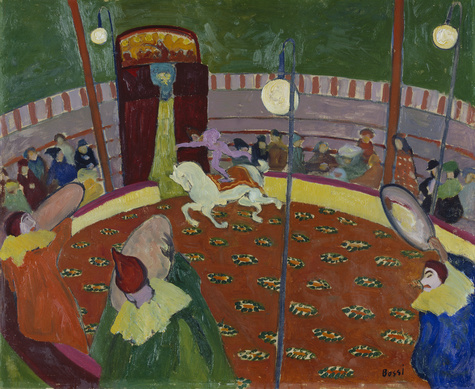
Erma Bossi
Zirkus, 1909
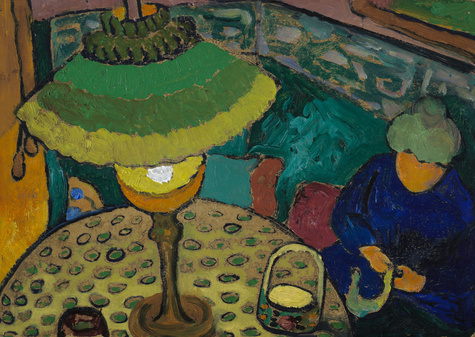
Erma Bossi
Interieur mit Lampe, 1909
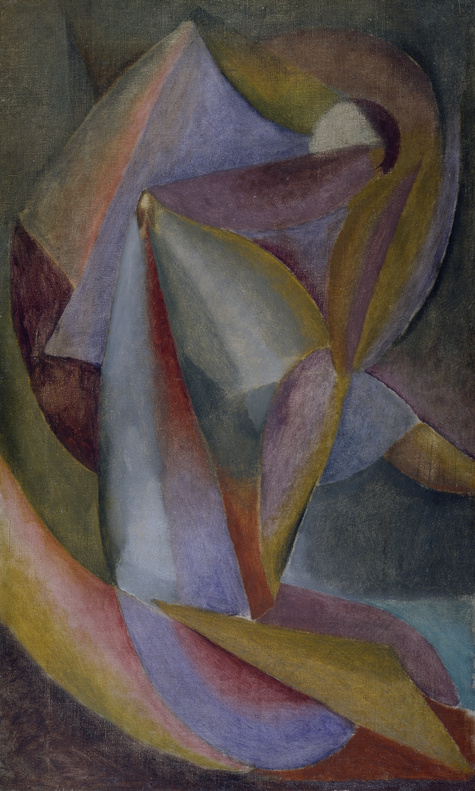
Wladimir Burljuk
Die Tänzerin, um 1910

Wladimir Burljuk
Die Bäume, 1911
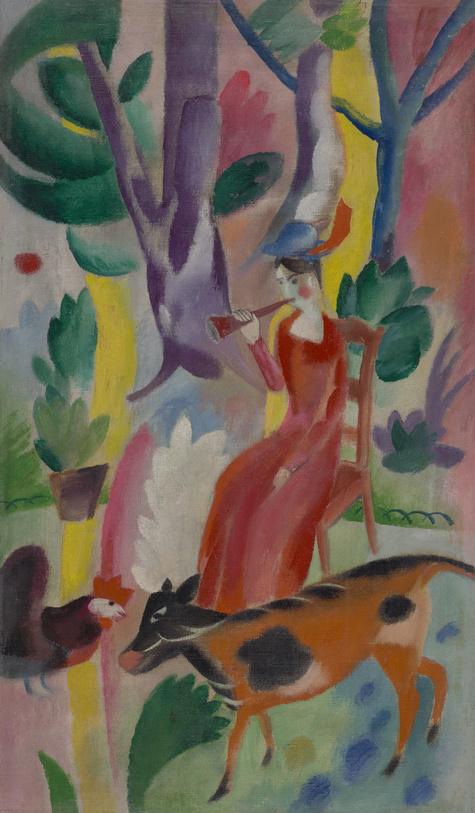
Heinrich Campendonk
Schalmeibläserin, 1914
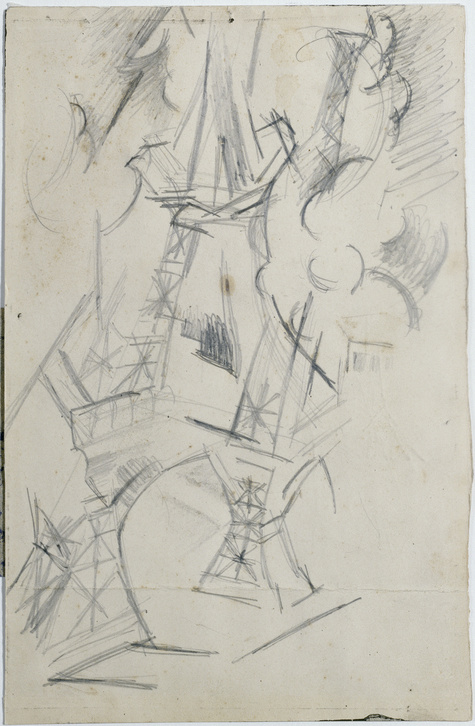
Robert Delaunay
Eiffelturm, 1911
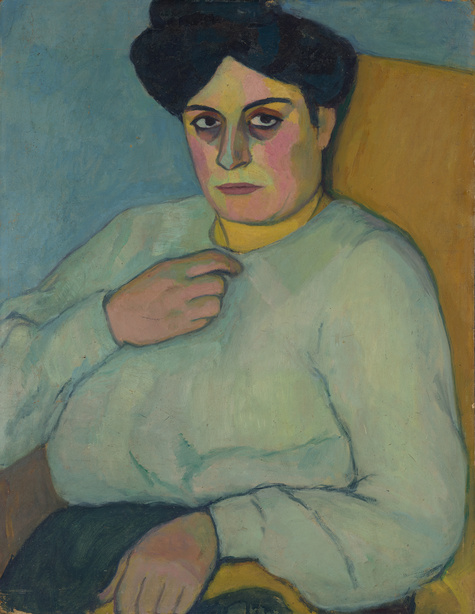
Elisabeth Iwanowna Epstein
Selbstporträt, 1911

Elisabeth Iwanowna Epstein
Selbstporträt, 1911
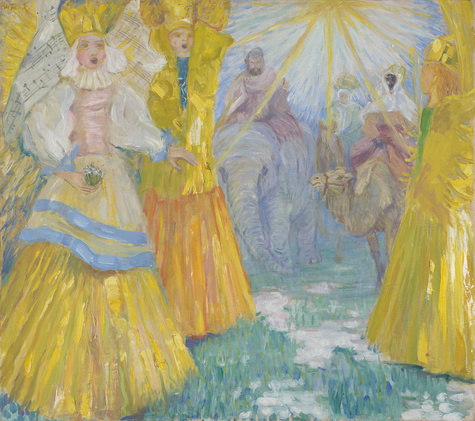
Maria Franck-Marc
Heilige 3 Könige, um 1911/12

Maria Franck-Marc
Tanzende Schafe, 1908
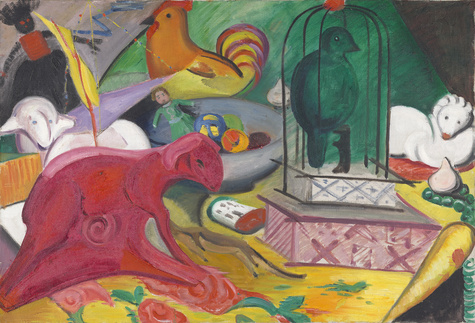
Maria Franck-Marc
Kinderspielzeug mit Vogelkäfig, um 1911
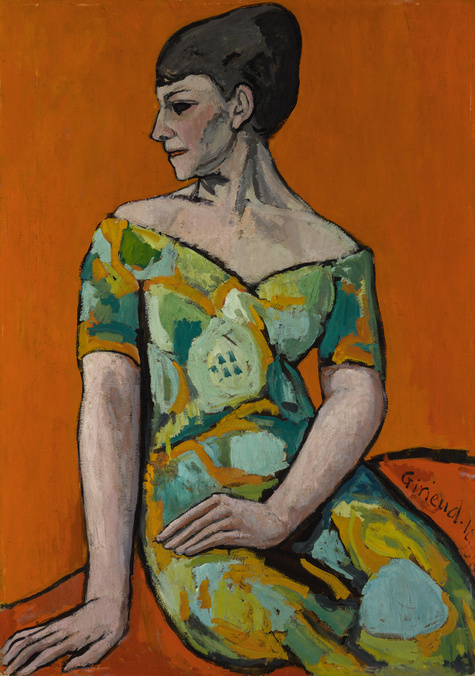
Pierre Girieud
Bildnis der Malerin Emilie Charmy, 1908
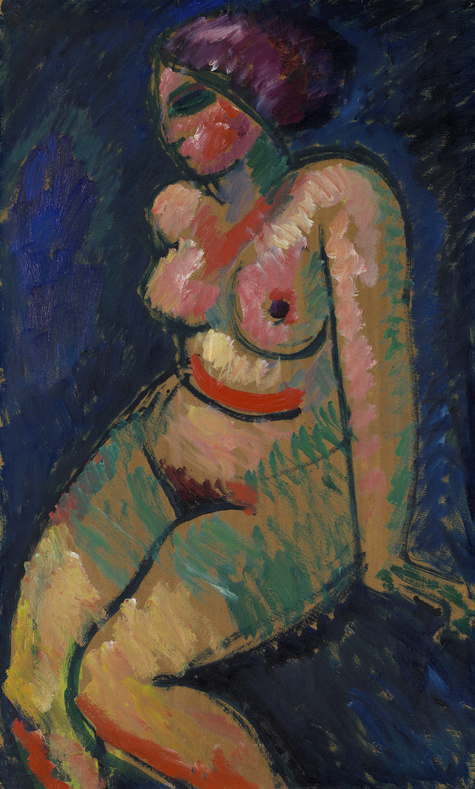
Alexej von Jawlensky
Sitzender weiblicher Akt, um 1910
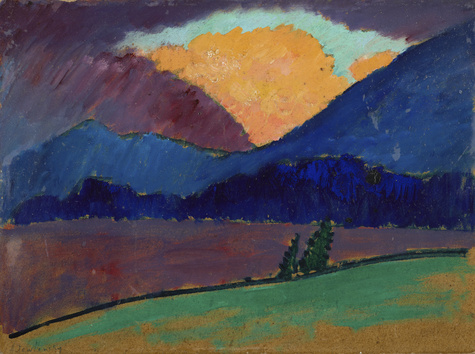
Alexej von Jawlensky
Sommerabend in Murnau, 1908/09

Alexej von Jawlensky
Bildnis des Tänzers Alexander Sacharoff, 1909
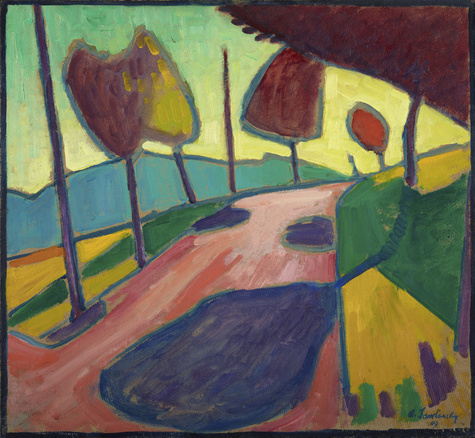
Alexej von Jawlensky
Murnauer Landschaft, 1909
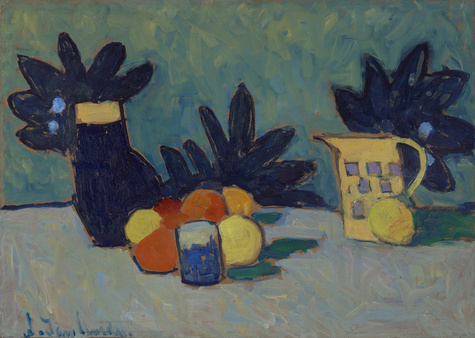
Alexej von Jawlensky
Stillleben mit Früchten, um 1910
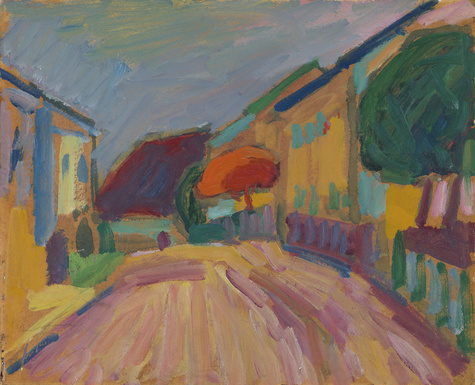
Alexej von Jawlensky
Skizze aus Murnau, 1908/09
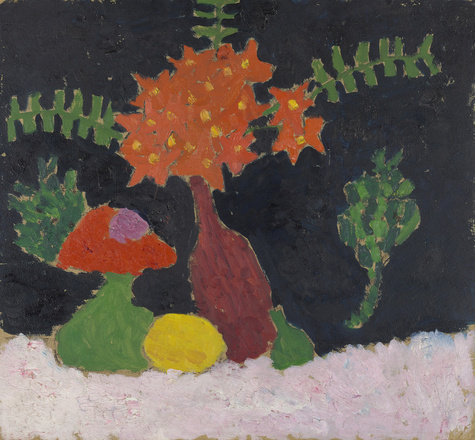
Andreas Jawlensky
Rote Blumen auf rosa Tisch, 1910
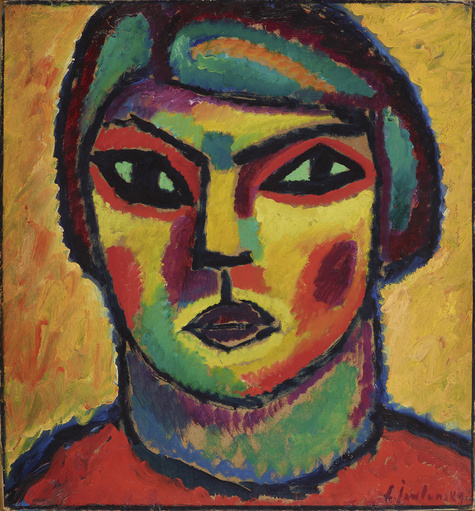
Alexej von Jawlensky
Reife, um 1912

Eugen von Kahler
Badende, 1910/11
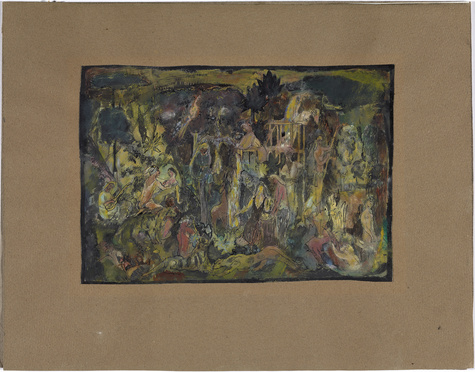
Eugen von Kahler
Liebesgarten, 1910/11
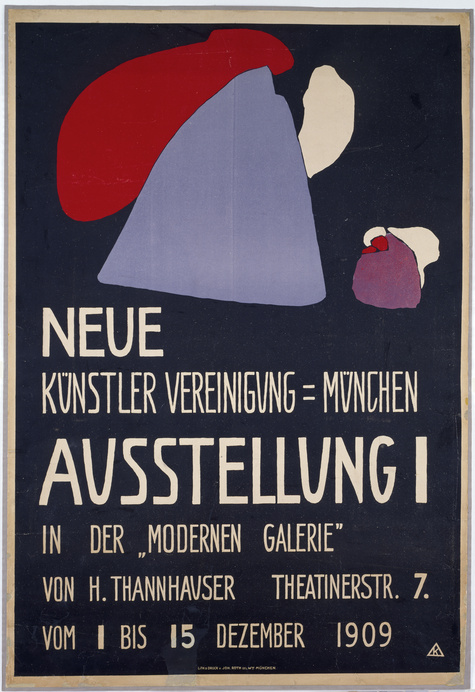
Wassily Kandinsky
Plakat für die erste Ausstellung der Neuen Künstlervereinigung München, 1909
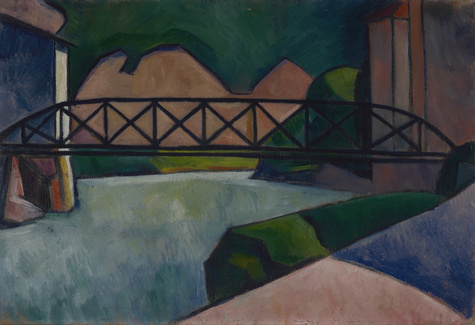
Alexander Kanoldt
Eiserne Brücke, 1911
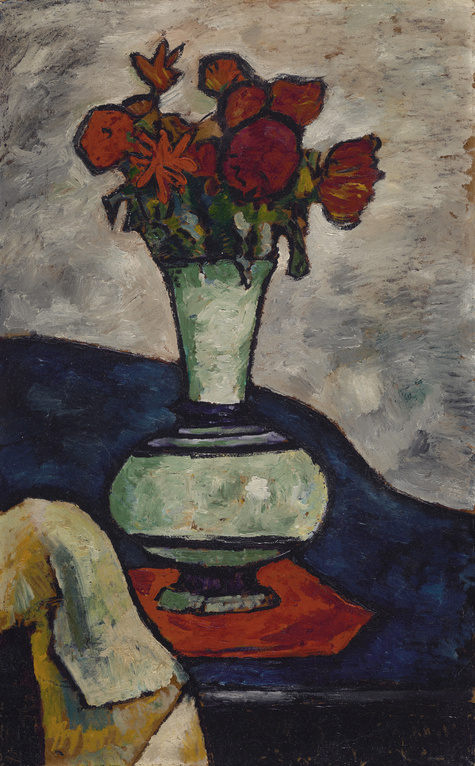
Alexander Kanoldt
Welke Blumen, 1910

Wassily Kandinsky
Murnau – Blick über den Staffelsee, Sommer 1908
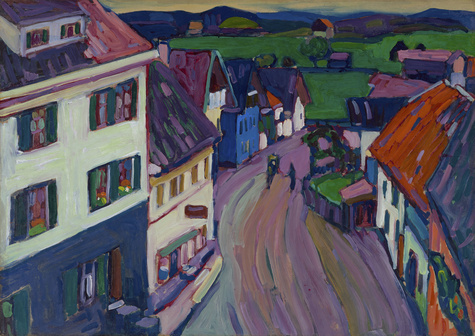
Wassily Kandinsky
Murnau – Blick aus dem Fenster des Griesbräu, 1908

Wassily Kandinsky
Murnau – Schloss und Kirche, 1909
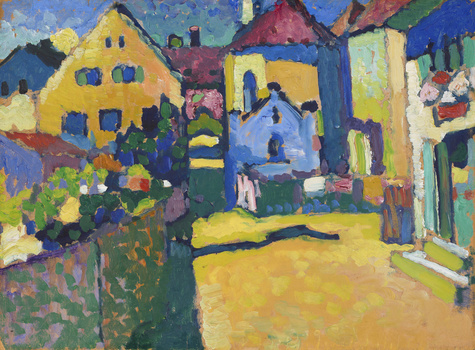
Wassily Kandinsky
Murnau – Grüngasse, 1909

Wassily Kandinsky
Kochel – Friedhof und Pfarrhaus, 1909
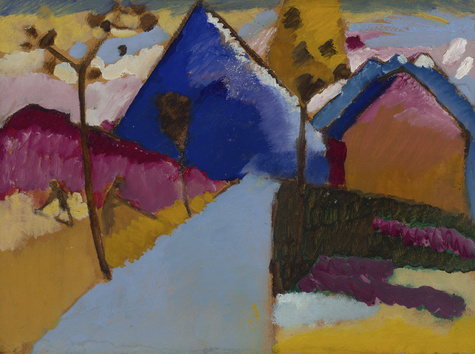
Wassily Kandinsky
Kochel – Gerade Straße, 1909
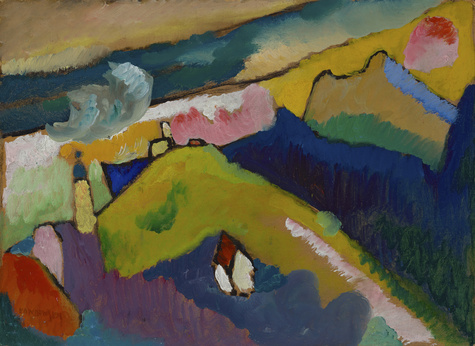
Wassily Kandinsky
Murnau – Berglandschaft mit Kirche, Sommer 1910
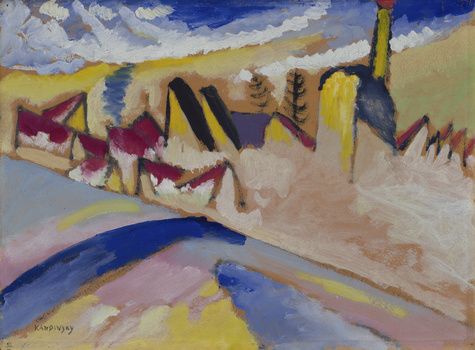
Wassily Kandinsky
Studie für "Winter II", Winter 1910/1911

Wassily Kandinsky
Eisenbahn bei Murnau, 1909
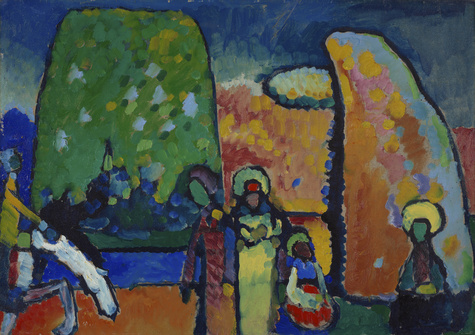
Wassily Kandinsky
Studie zu "Improvisation Nr. 2 (Trauermarsch)", 1909
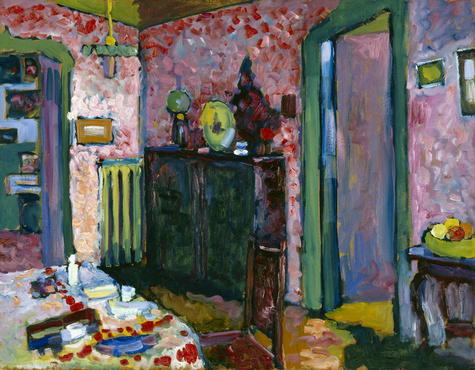
Wassily Kandinsky
Interieur (Mein Esszimmer), 1909
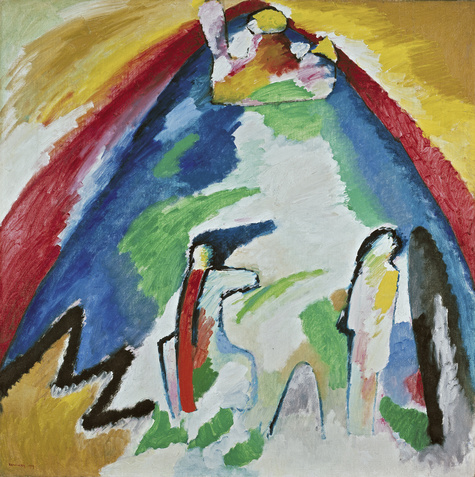
Wassily Kandinsky
Berg, 1909

Wassily Kandinsky
Improvisation 6 (Afrikanisches), 1909
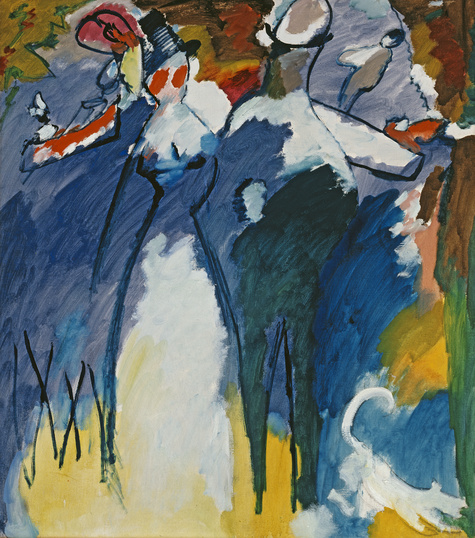
Wassily Kandinsky
Impression VI (Sonntag), 1911
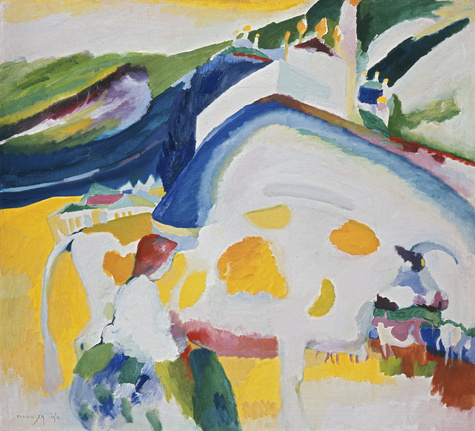
Wassily Kandinsky
Die Kuh, 1910
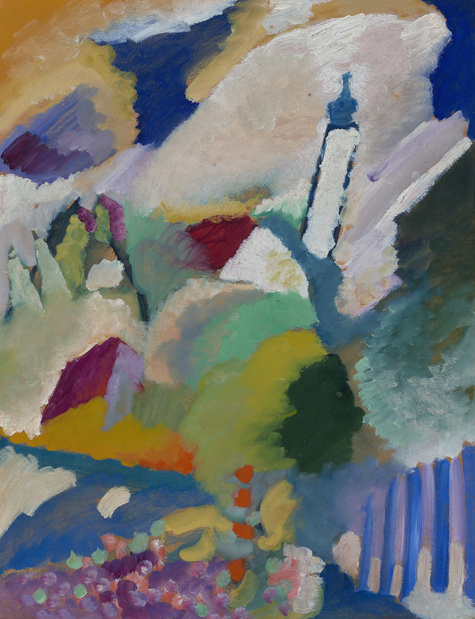
Wassily Kandinsky
Murnau mit Kirche I, 1910
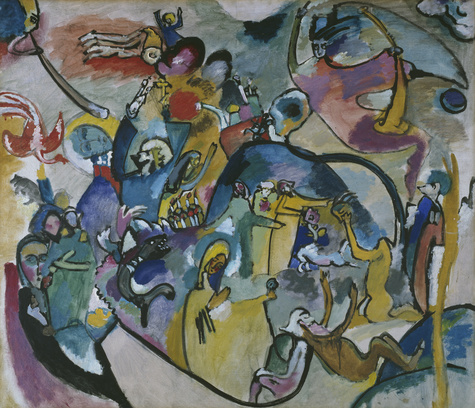
Wassily Kandinsky
Allerheiligen II, 1911
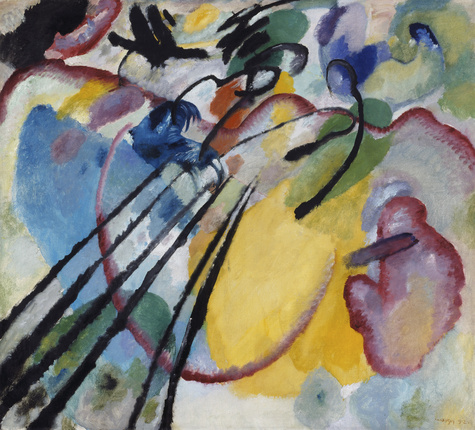
Wassily Kandinsky
Improvisation 26 (Rudern), 1912
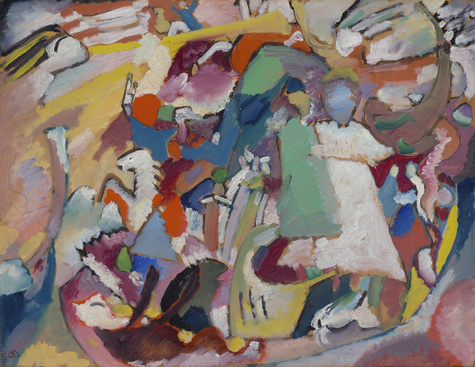
Wassily Kandinsky
Allerheiligen I, Juli/August 1911
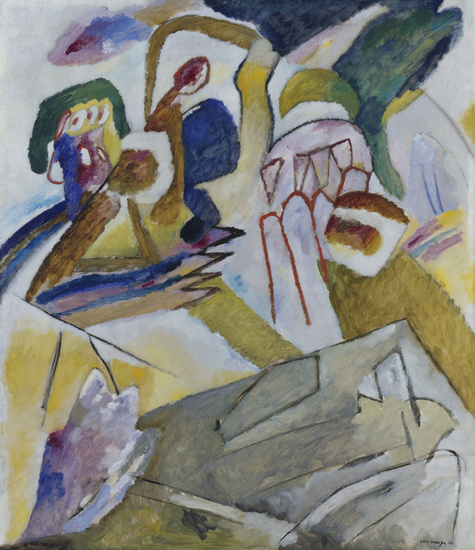
Wassily Kandinsky
Improvisation 18 (mit Grabstein), 1911
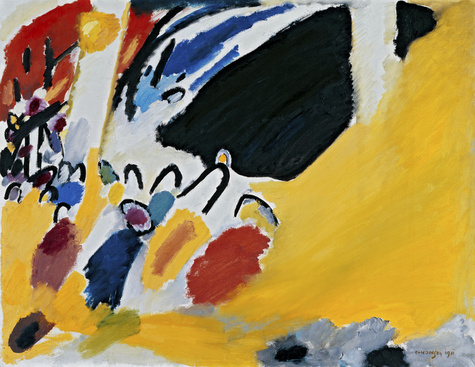
Wassily Kandinsky
Impression III (Konzert), 1911
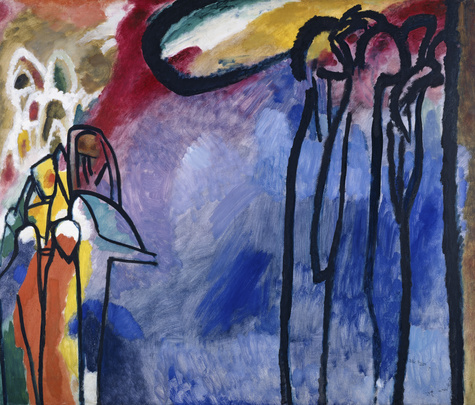
Wassily Kandinsky
Improvisation 19, 1911
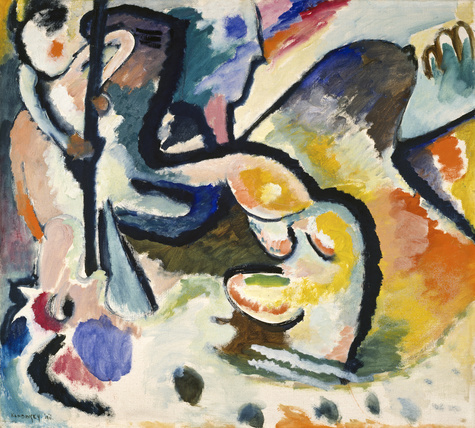
Wassily Kandinsky
St. Georg III, 1911

Wassily Kandinsky
Improvisation 21 a, 1911

Wassily Kandinsky
Romantische Landschaft, 1911

Wassily Kandinsky
Improvisation 19 a, 1911
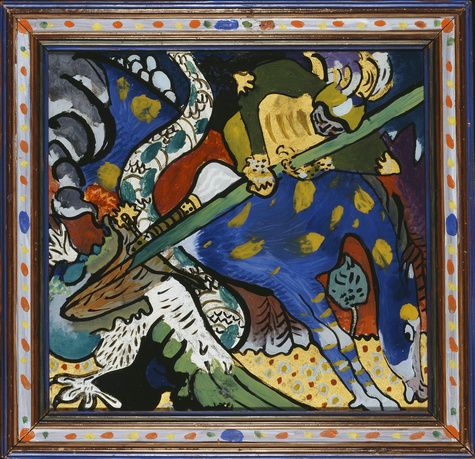
Wassily Kandinsky
Heiliger Georg I, 1911
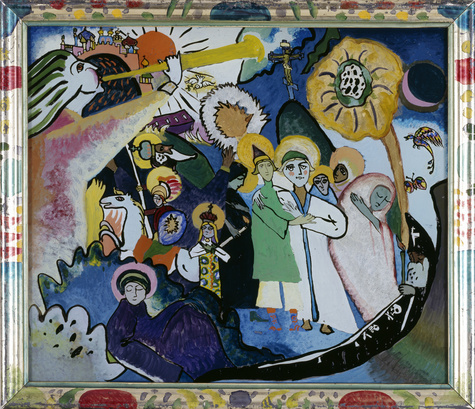
Wassily Kandinsky
Allerheiligen I, 1911
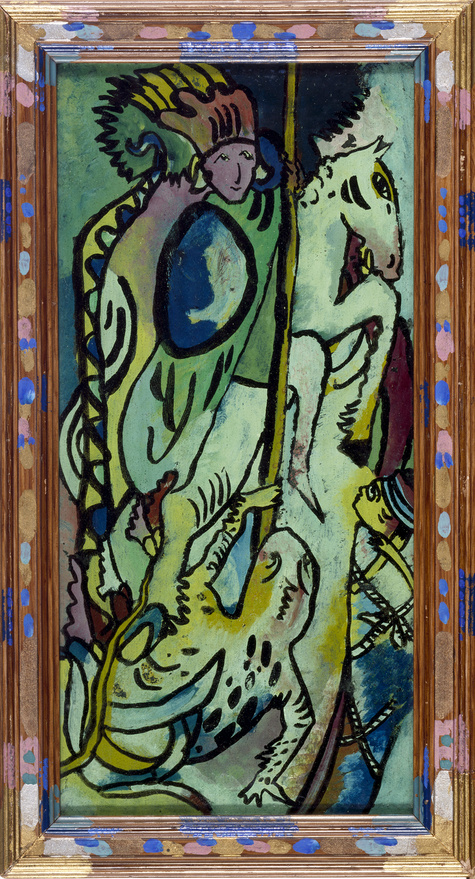
Wassily Kandinsky
St. Georg II, vermutlich Sommer 1911
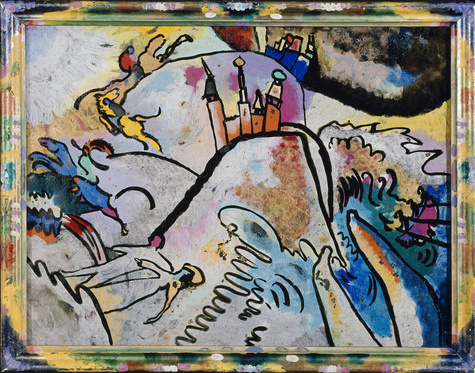
Wassily Kandinsky
Mit Sonne, 1911

Wassily Kandinsky
Apokalyptische Reiter I, 1911

Wassily Kandinsky
Große Auferstehung, Frühsommer 1911
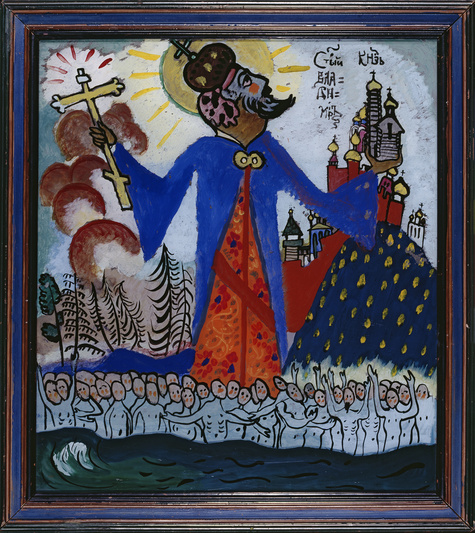
Wassily Kandinsky
Heiliger Wladimir, Juni 1911
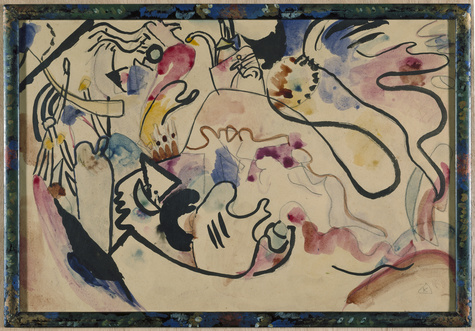
Wassily Kandinsky
Aquarell Nr. 8 "Jüngster Tag", 1911/12
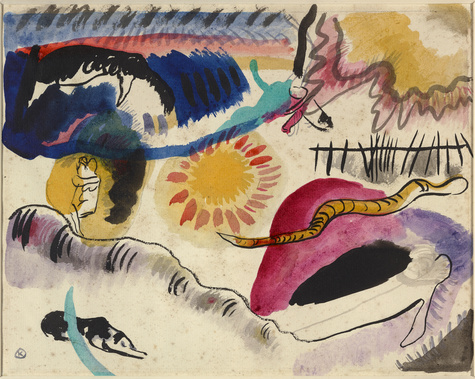
Wassily Kandinsky
Aquarell Nr. 3 (Liebesgarten), 1911/12
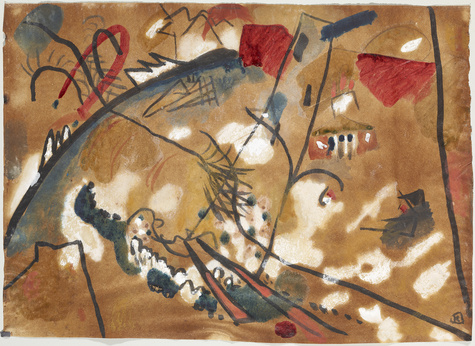
Wassily Kandinsky
Entwurf zu "Improvisation 24 (Troika II)", 1911/12

Wassily Kandinsky
Entwurf zu "Komposition II", um 1910
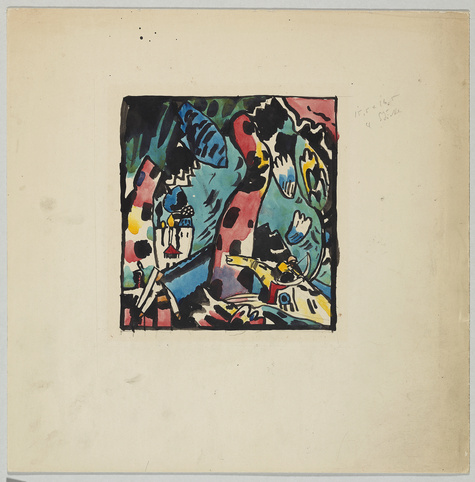
Wassily Kandinsky
Entwurf für den Farbholzschnitt "Bogenschütze", 1908/09
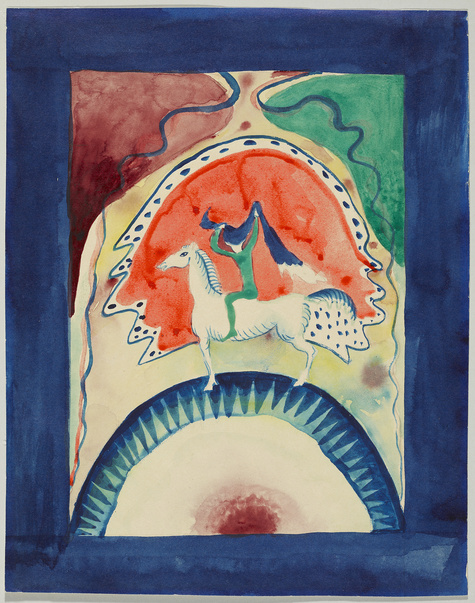
Wassily Kandinsky
Entwurf für den Umschlag des Almanachs "Der Blaue Reiter", Sommer 1911

Wassily Kandinsky
Entwurf für den Umschlag des Almanachs "Der Blaue Reiter", Sommer 1911
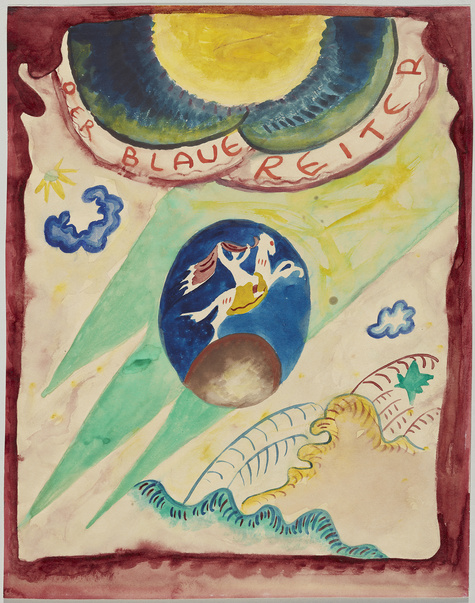
Wassily Kandinsky
Entwurf für den Umschlag des Almanachs "Der Blaue Reiter", Sommer 1911
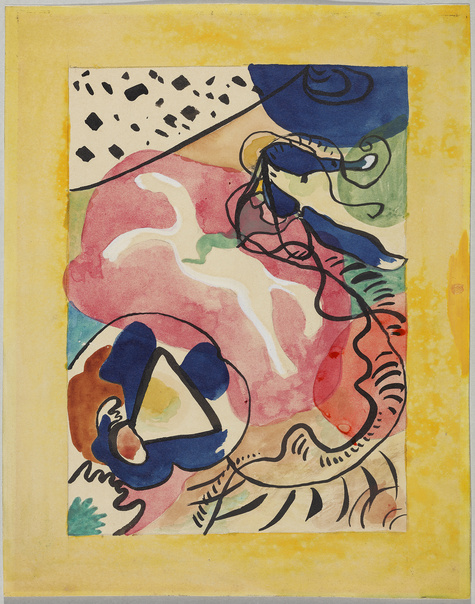
Wassily Kandinsky
Entwurf für den Umschlag des Almanachs "Der Blaue Reiter", Sommer 1911
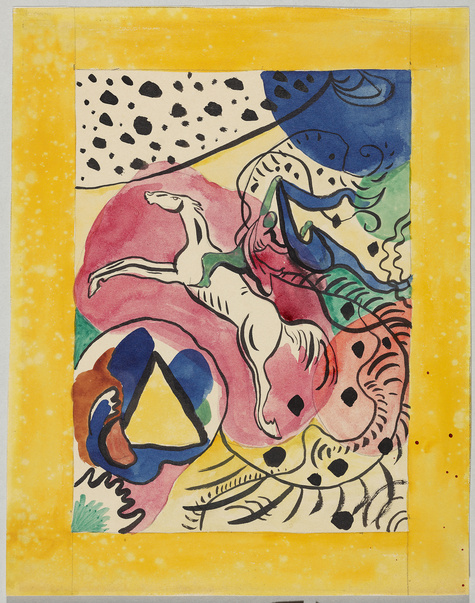
Wassily Kandinsky
Entwurf für den Umschlag des Almanachs "Der Blaue Reiter", Sommer 1911
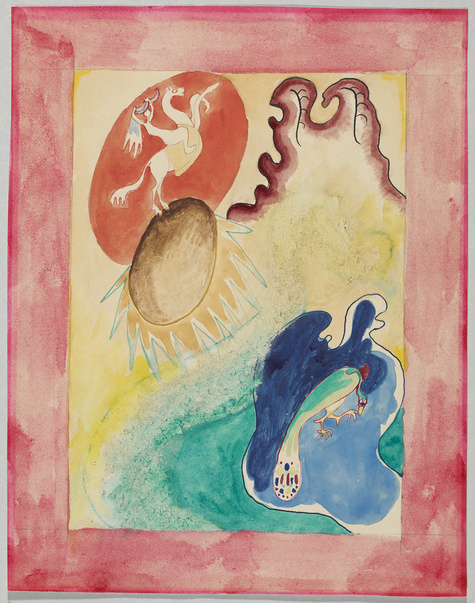
Wassily Kandinsky
Entwurf für den Umschlag des Almanachs "Der Blaue Reiter", Sommer 1911
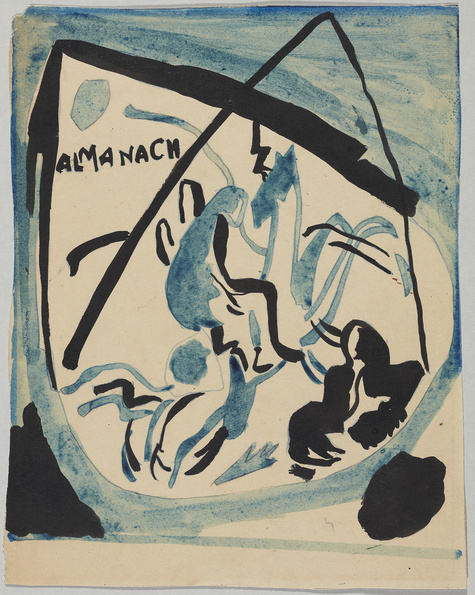
Wassily Kandinsky
Entwurf für den Umschlag des Almanachs "Der Blaue Reiter", Sommer 1911

Wassily Kandinsky
Endgültiger Entwurf für den Umschlag des Almanachs "Der Blaue Reiter", 1911
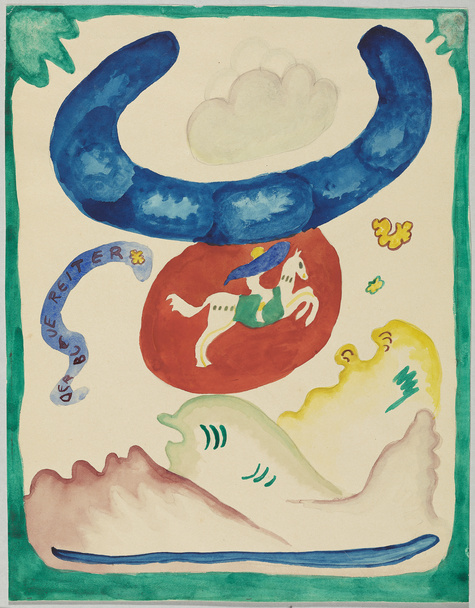
Wassily Kandinsky
Entwurf für den Umschlag des Almanachs "Der Blaue Reiter", 1911
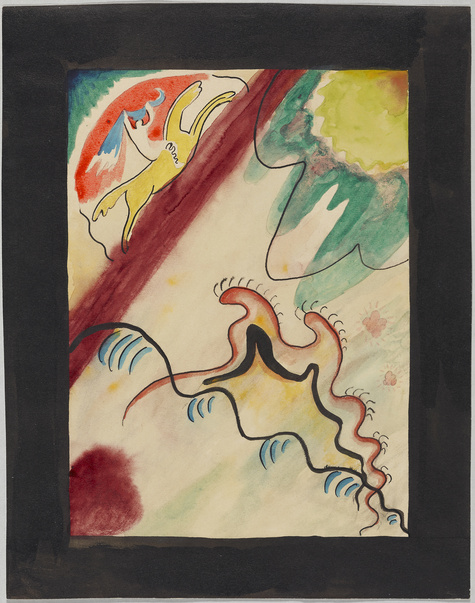
Wassily Kandinsky
Entwurf für den Umschlag des Almanachs "Der Blaue Reiter", Sommer 1911
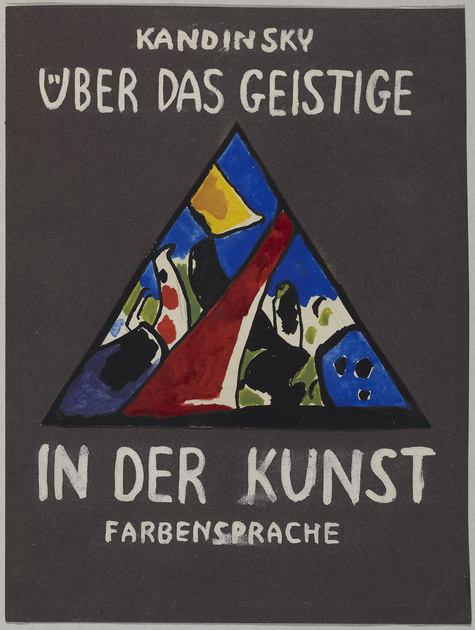
Wassily Kandinsky
Entwurf für den Einband von "Über das Geistige in der Kunst", um 1910
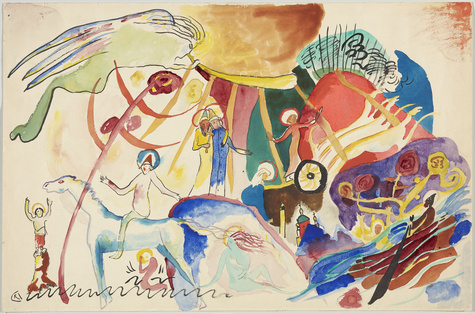
Wassily Kandinsky
Entwurf zu "Allerheiligen II (Komposition mit Heiligen)", 1911
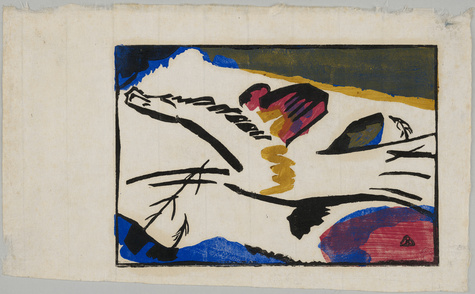
Wassily Kandinsky
Lyrisches, 1911
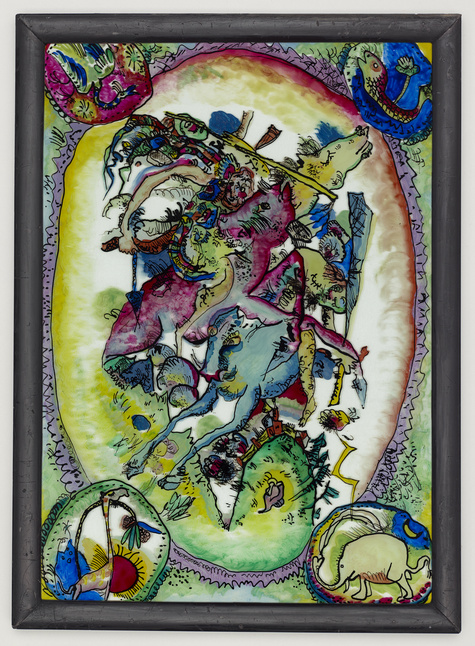
Wassily Kandinsky
Apokalyptische Reiter II, 01.07.14
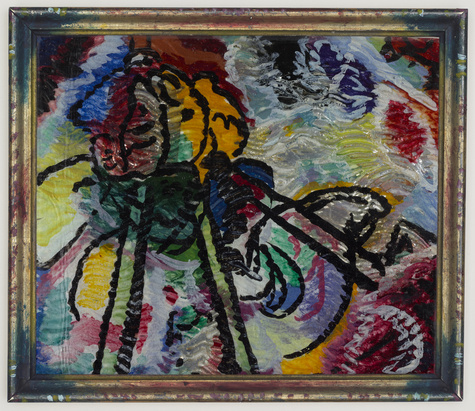
Wassily Kandinsky
Rudern, um 1912
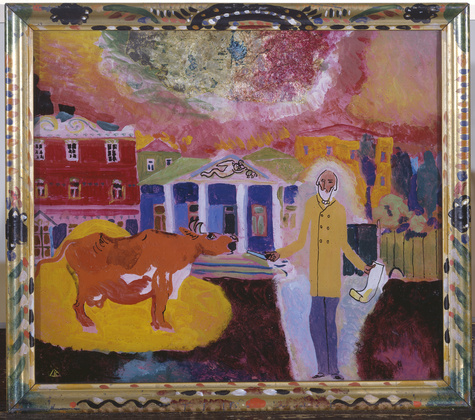
Wassily Kandinsky
Kuh in Moskau, 01.05.12
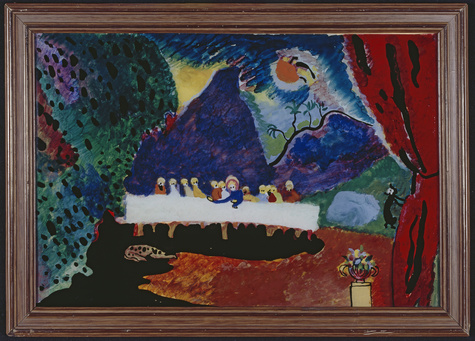
Wassily Kandinsky
Heiliges Abendmahl, 1909/10
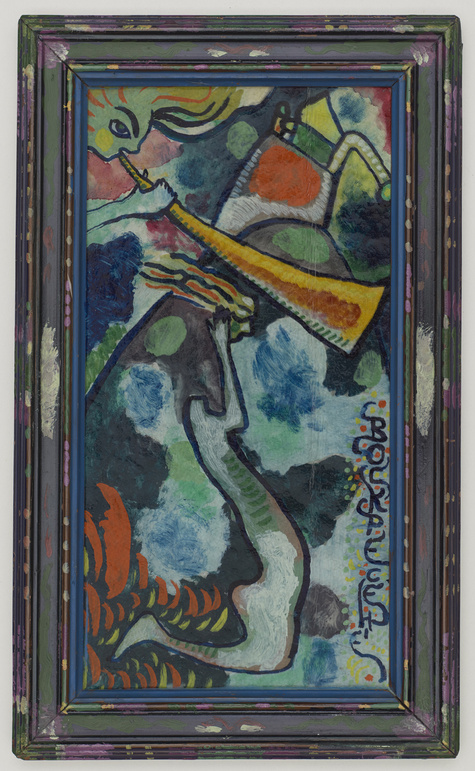
Wassily Kandinsky
Auferstehung (Jüngstes Gericht), 01.08.11
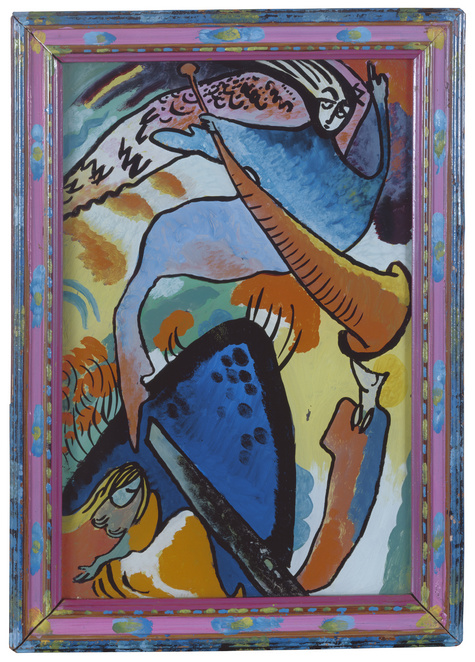
Wassily Kandinsky
Engel des Jüngsten Gerichts (Fragment Jüngstes Gericht), 01.08.11

Wassily Kandinsky
Phantasievogel und schwarzer Panther, Juni 1911
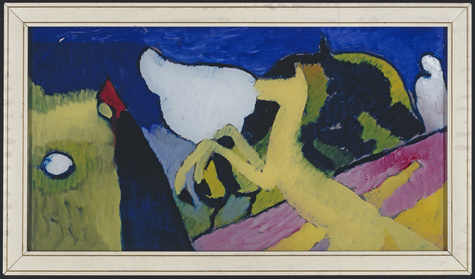
Wassily Kandinsky
Mit gelbem Pferd, 1909
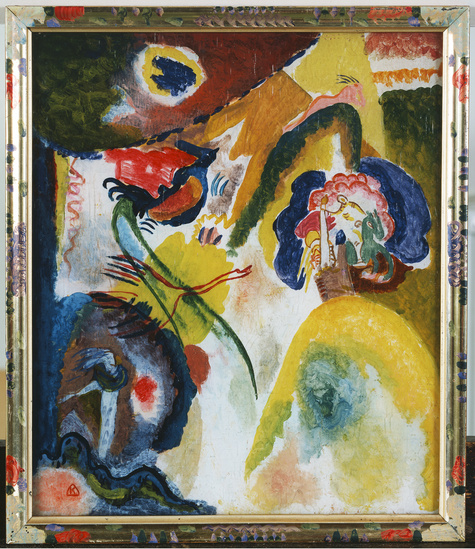
Wassily Kandinsky
Glasbild mit Schwan, um 1912

Wassily Kandinsky
Allerheiligen II, 1911
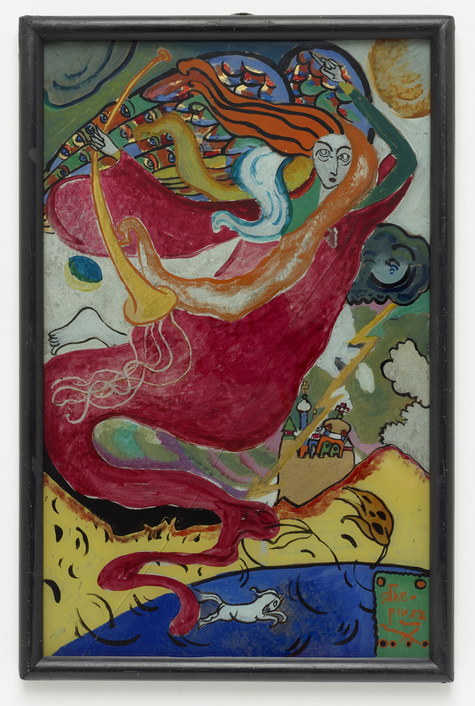
Wassily Kandinsky
Der heilige Gabriel, 1911
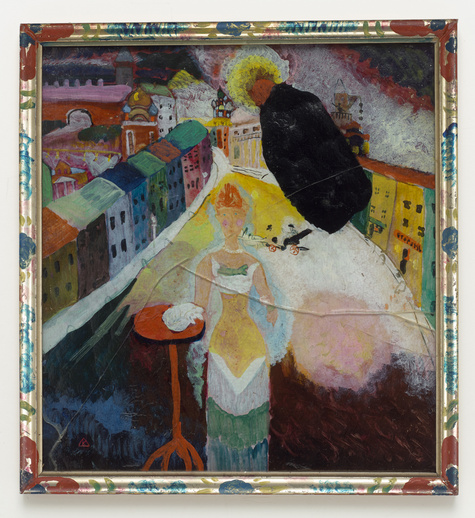
Wassily Kandinsky
Dame in Moskau, 1912

Wassily Kandinsky
Glasbild mit rotem Fleck, um 1913
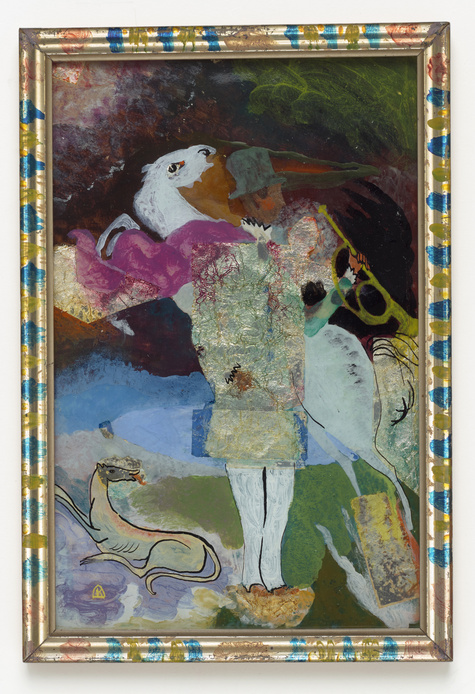
Wassily Kandinsky
Kavalier mit Trompete, um 1912
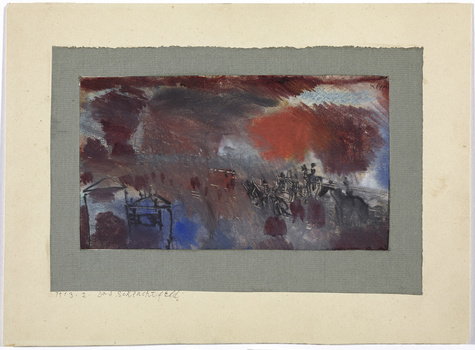
Paul Klee
Das Schlachtfeld, 1913, 2 (A)
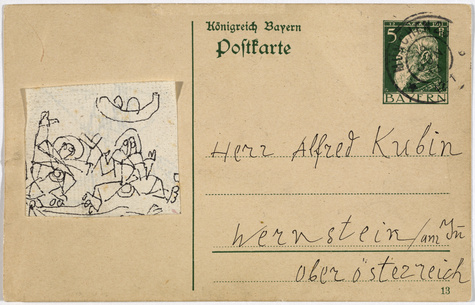
Paul Klee
"Figuren", Paul Klee aus München an Alfred Kubin in Wernstein/Zwickledt: Postkarte, Poststempel 19.06.1913, 19. Juni 1913
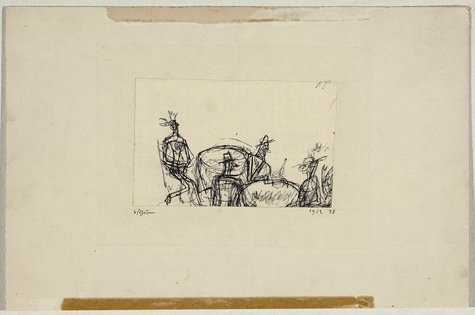
Paul Klee
Vier Figuren an zwei Tischen, 1912,28
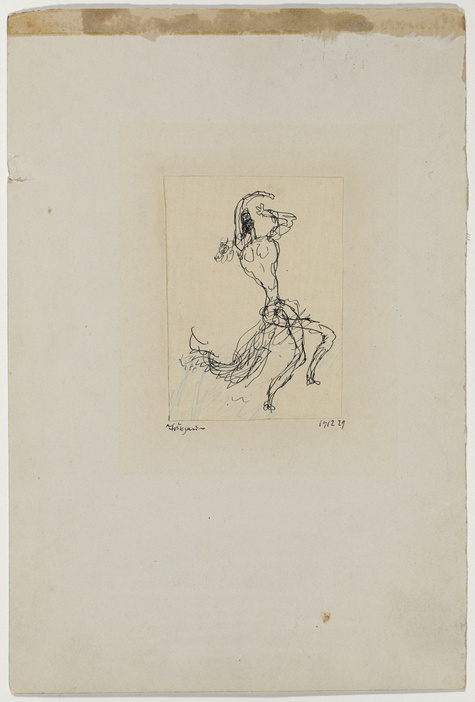
Paul Klee
Tänzerin, 1912, 29 (A)
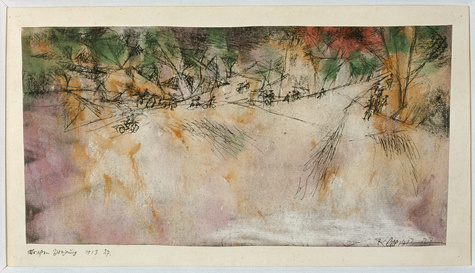
Paul Klee
Straßen-Zweigung, 1913, 27 (B)
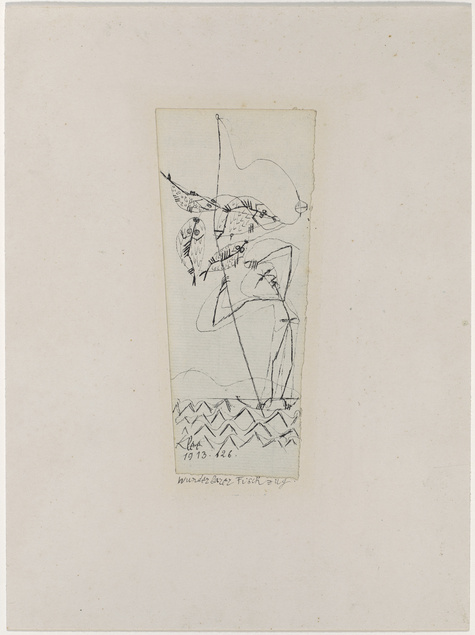
Paul Klee
Wunderbarer Fischzug, 1913, 126 (A)
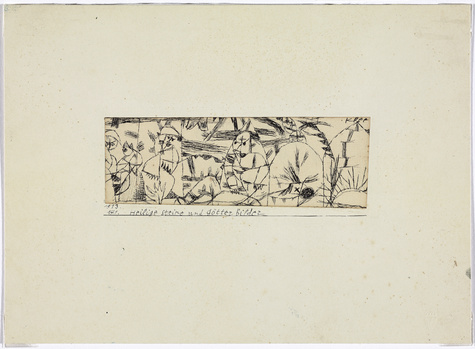
Paul Klee
Heilige Steine und Götterbilder, 1913, 141 (A)

Paul Klee
"Groteske Frauenfigur", Paul Klee aus München an Gabriele Münter in Murnau: Postkarte, Poststempel 26.06.1913, 26. Juni 1913

Alfred Kubin
Gewitter, 1906
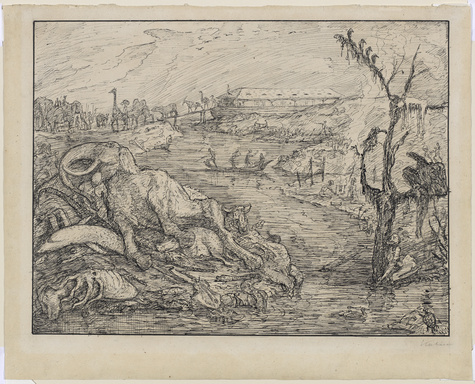
Alfred Kubin
Arche Noah: Die Landung, 1911
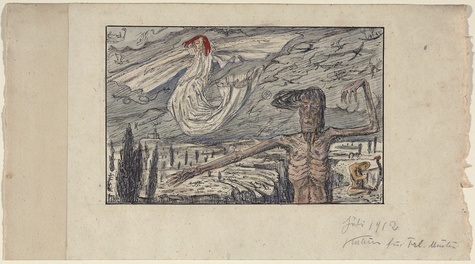
Alfred Kubin
Der Luftgeist, 1912

Alfred Kubin
Mädchen und Tiere im Wald, 1912
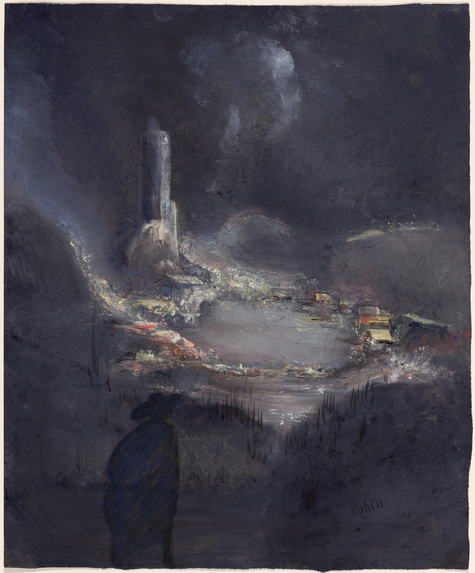
Alfred Kubin
Die Ahnung, 1906
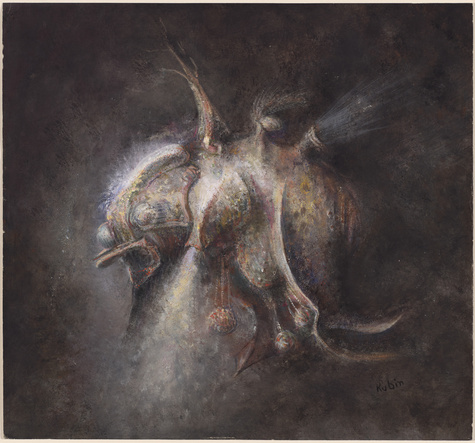
Alfred Kubin
Verpuppte Welt, 1906
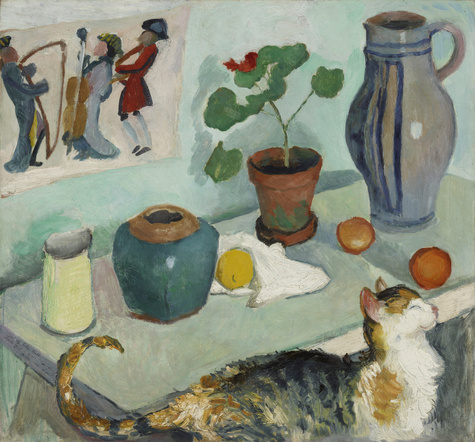
August Macke
Der Geist im Hausgestühl: Stillleben mit Katze, 1910
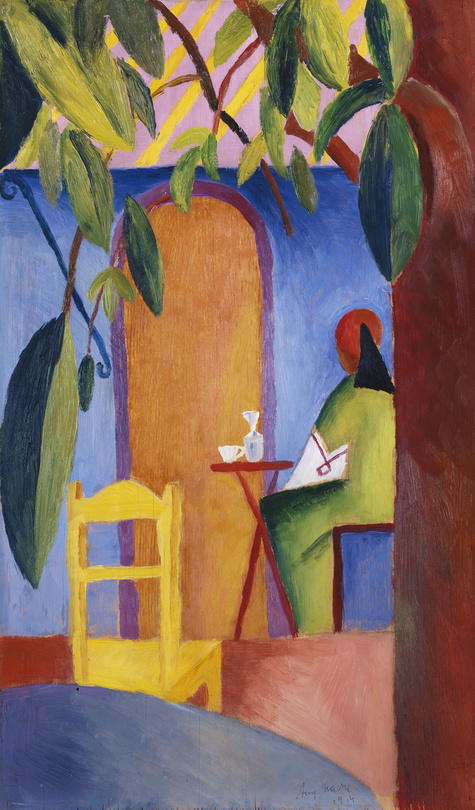
August Macke
Türkisches Café, 1914

August Macke
Porträt mit Äpfeln, 1909
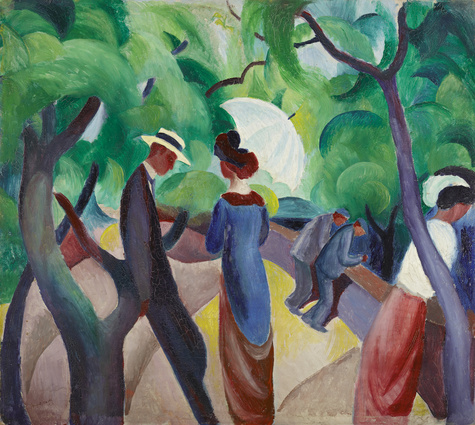
August Macke
Promenade, 1913
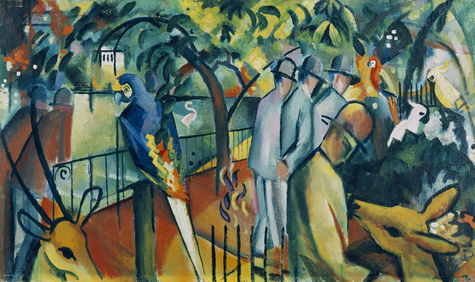
August Macke
Zoologischer Garten I, 1912

August Macke
Kinder mit Ziege, 1913
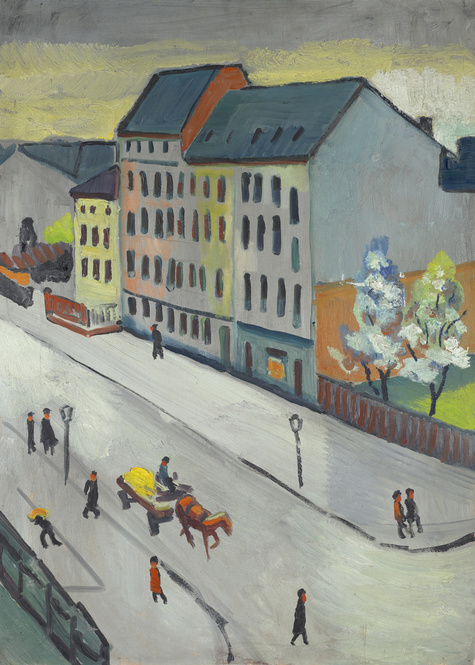
August Macke
Unsere Straße in Grau, 1911
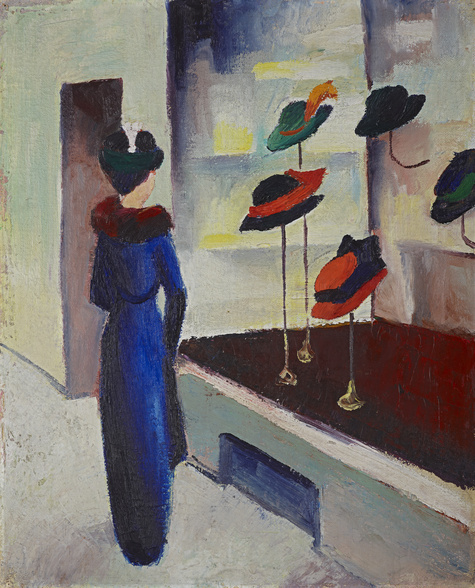
August Macke
Hutladen, 1913
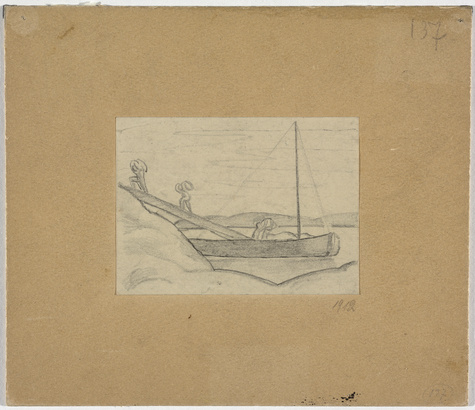
August Macke
Ausladen eines Lastkahnes, 1912

August Macke
Männer am Ufer, 1912
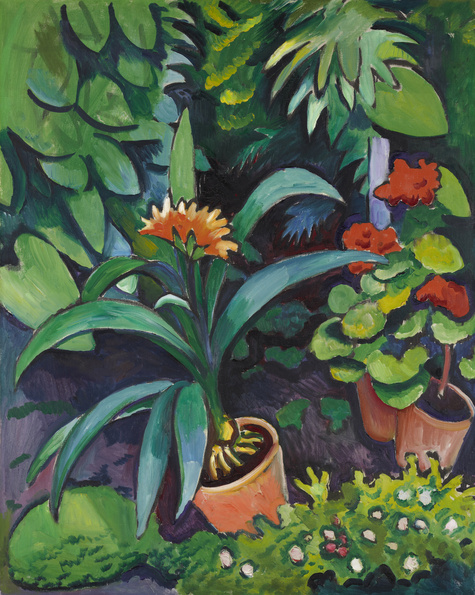
August Macke
Blumen im Garten, Clivia und Pelargonien, 1911
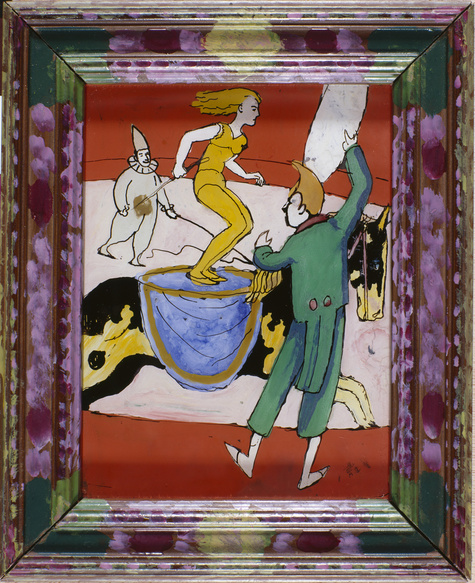
August Macke
Im Zirkus, 1911
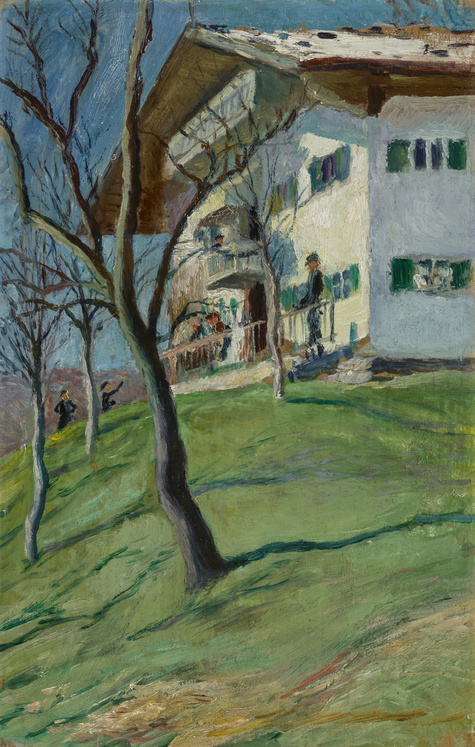
August Macke
Unser Häuschen in Tegernsee, 1910
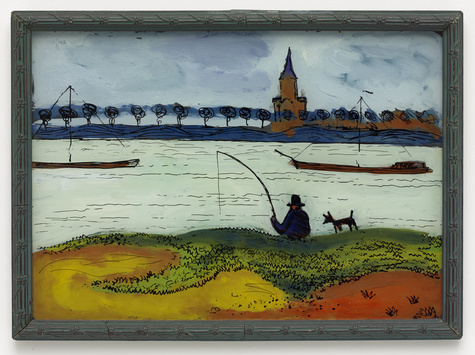
August Macke
Flusslandschaft mit Angler, 1911
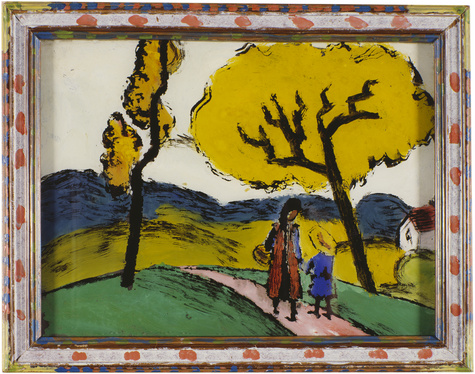
August Macke
Zwei Mädchen in Landschaft, 1911
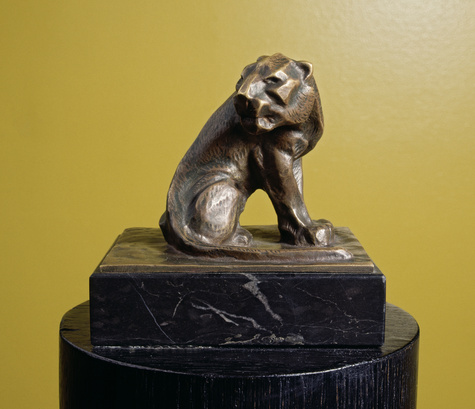
Franz Marc
Der Panther, 1908
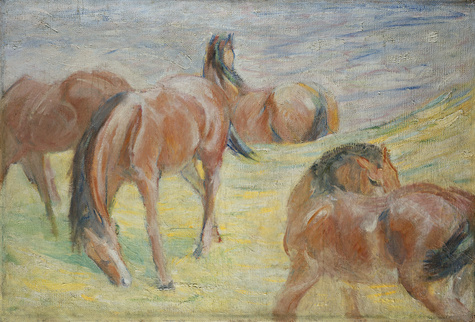
Franz Marc
Weidende Pferde I, 1910
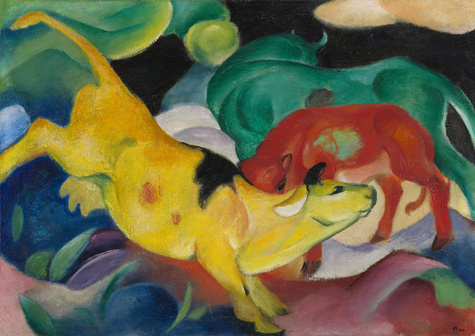
Franz Marc
Kühe, rot, grün, gelb, 1911

Franz Marc
Fabeltier, 1912
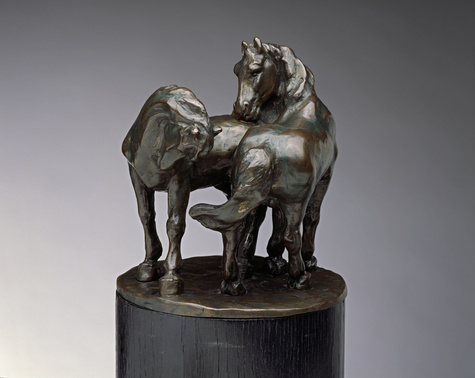
Franz Marc
Zwei Pferde, 1908/09
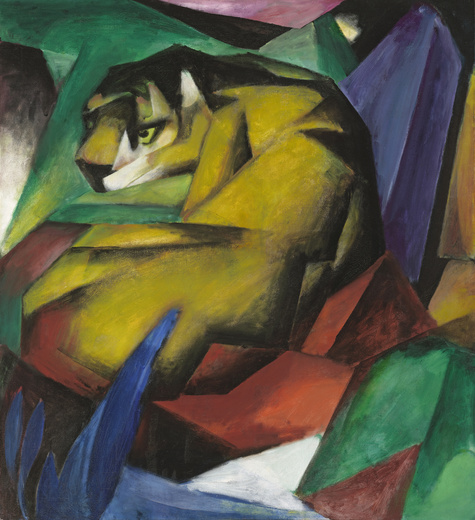
Franz Marc
Tiger, 1912

Franz Marc
Reh im Walde II, 1912
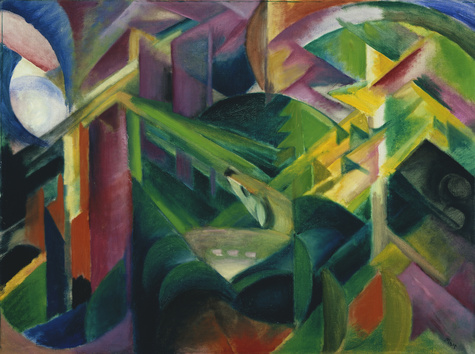
Franz Marc
Reh im Klostergarten, 1912
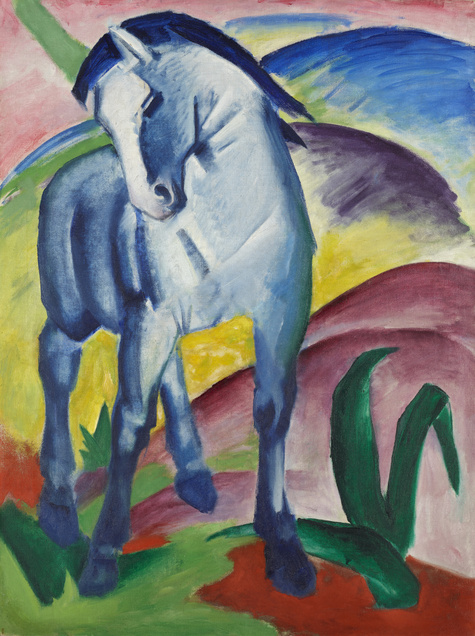
Franz Marc
Blaues Pferd I, 1911
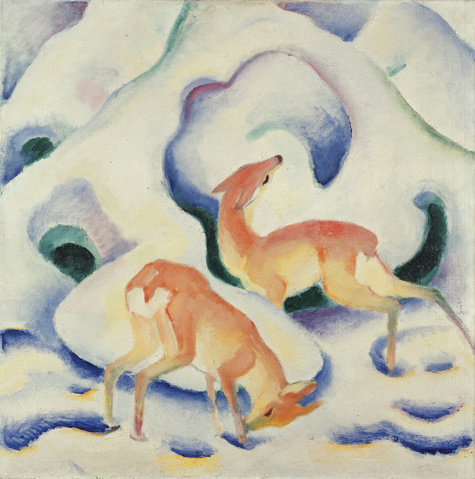
Franz Marc
Rehe im Schnee II, 1911
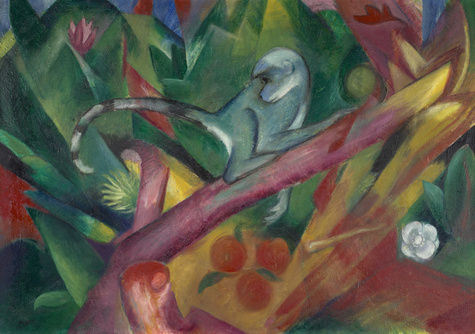
Franz Marc
Das Äffchen, 1912
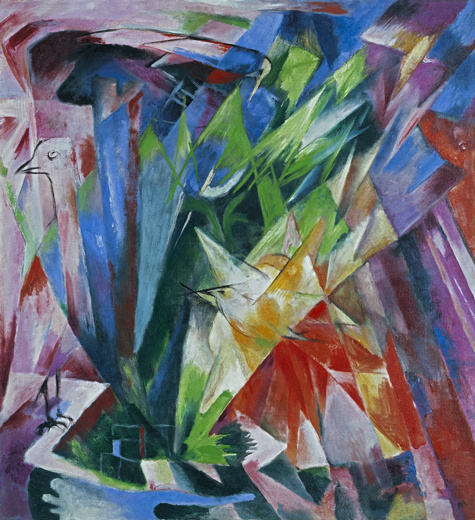
Franz Marc
Vögel, 1914
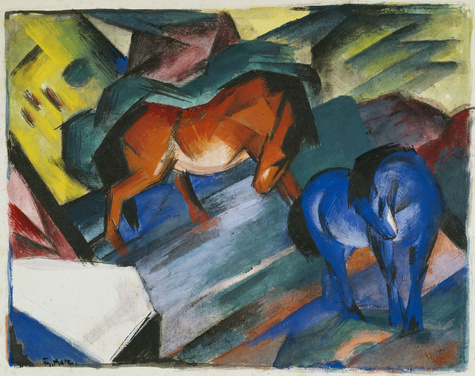
Franz Marc
Rotes und blaues Pferd, 1912
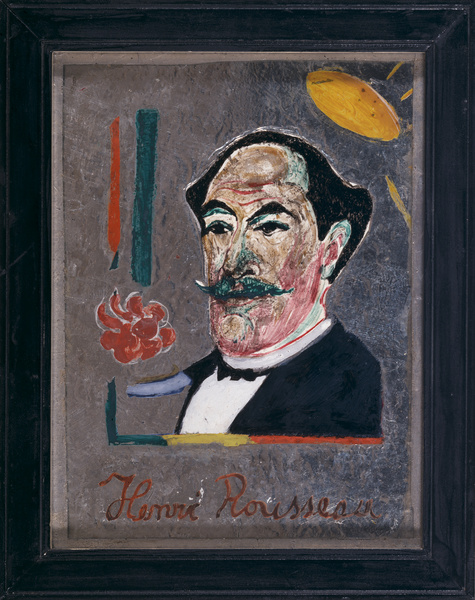
Franz Marc
Bildnis Henri Rousseau, 1911
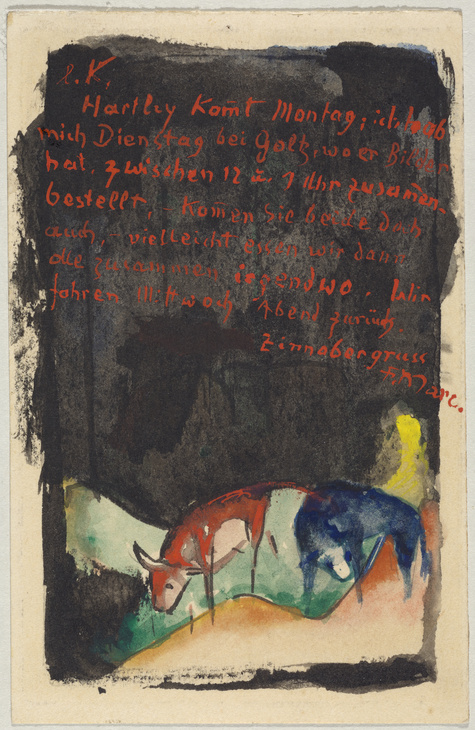
Franz Marc
"Zinnobergruß", Franz Marc aus Sindelsdorf an Wassily Kandinsky in München: Postkarte, Poststempel 19.04.1913, 19. April 1913

Franz Marc
"Altarschaf aus Lana", Franz Marc aus Sindelsdorf an Gabriele Münter in München: Postkarte, Poststempel 11.04.1913, 11. April 1913
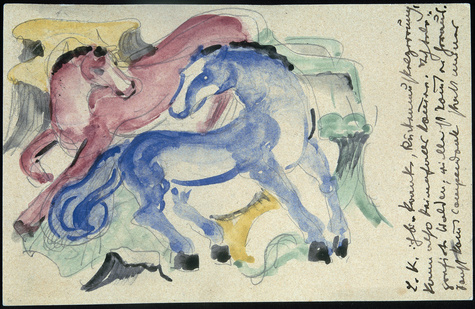
Franz Marc
"Rotes und blaues Pferd", Franz Marc aus Sindelsdorf an Wassily Kandinsky in München: Postkarte, Poststempel 05.04.1913, 5. April 1913
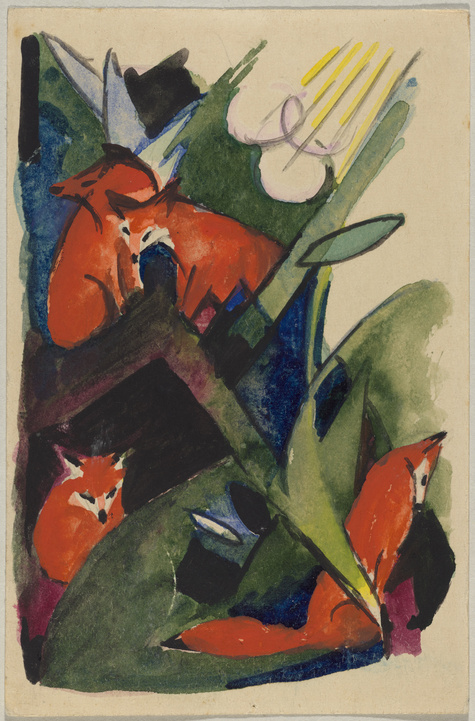
Franz Marc
"Vier Füchse", Franz Marc aus Sindelsdorf an Wassily Kandinsky in München: Postkarte, Poststempel 04.02.1913, 4. Februar 1913
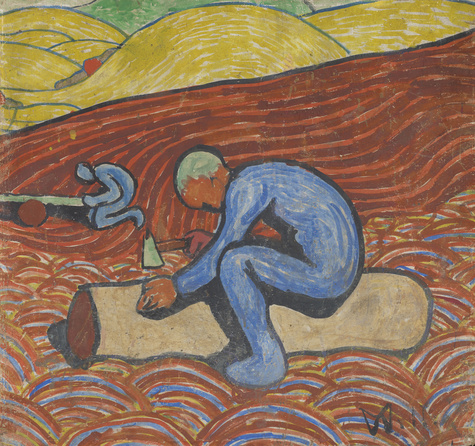
Wilhelm Morgner
Die Holzarbeiter, 1911
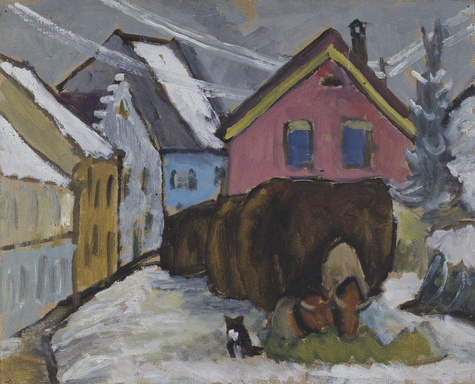
Gabriele Münter
Spreufuhren, 1910/11
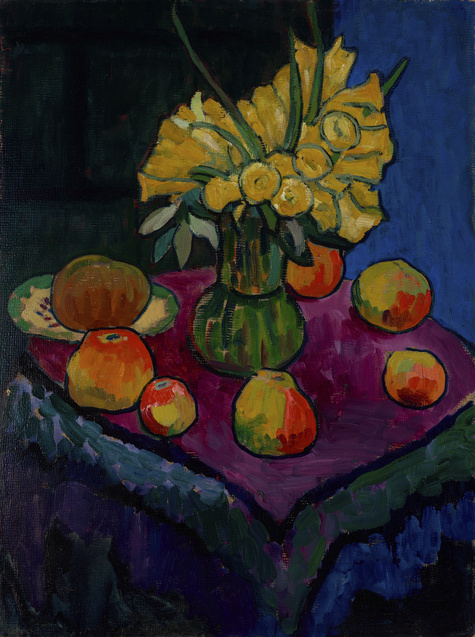
Gabriele Münter
Äpfel und Narzissen, 1909
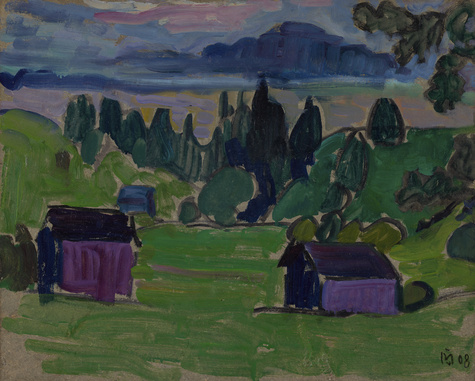
Gabriele Münter
Blick aufs Murnauer Moos, 1908

Gabriele Münter
Jawlensky und Werefkin, 1908/09
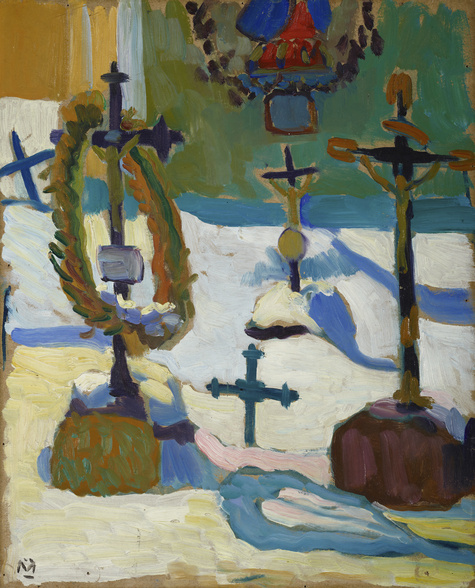
Gabriele Münter
Grabkreuze in Kochel, 1909
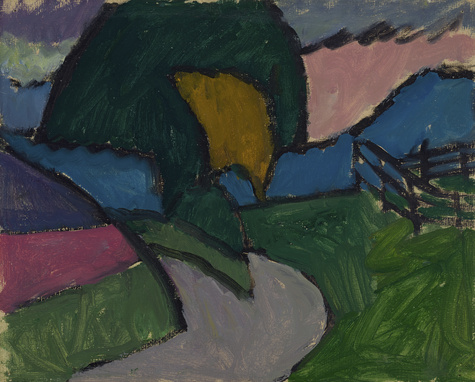
Gabriele Münter
Herbstlich, 1910
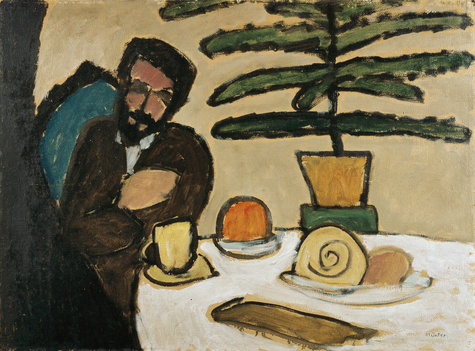
Gabriele Münter
Mann am Tisch (Kandinsky), 1911
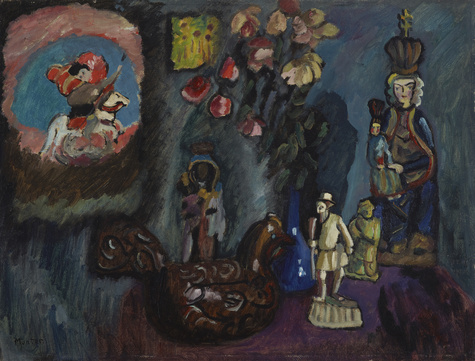
Gabriele Münter
Stillleben mit Heiligem Georg, 1911
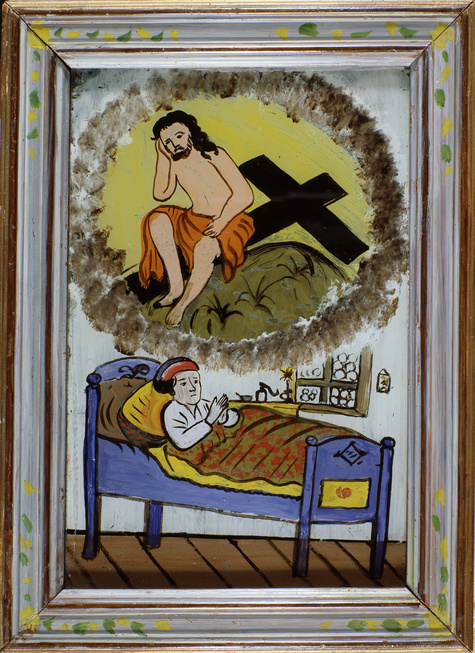
Gabriele Münter
Votivbild, um 1908/09
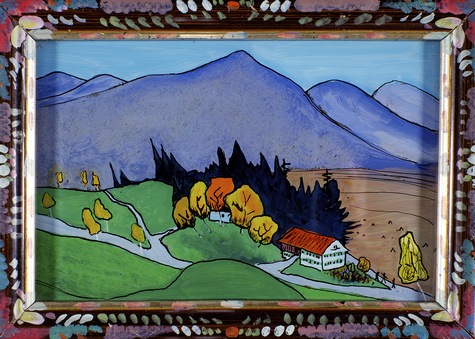
Gabriele Münter
Bayerische Landschaft mit Einödhof, um 1910
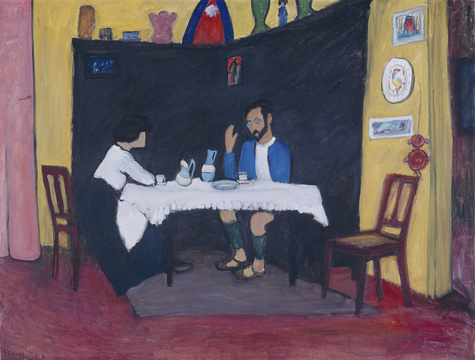
Gabriele Münter
Kandinsky und Erma Bossi am Tisch, 1912
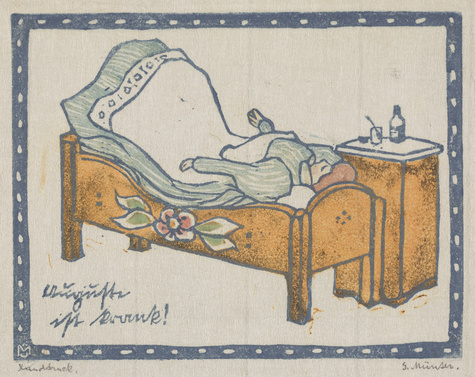
Gabriele Münter
Auguste ist krank (Spielzeug Nr. 1), 1908

Gabriele Münter
Tünnes und Gesellschaft (Spielzeug Nr. 2), 1908

Gabriele Münter
Onkel Sam und Gesellschaft (Spielzeug Nr. 3), 1908
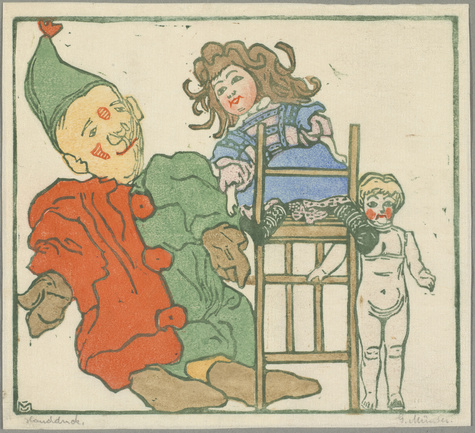
Gabriele Münter
Im Gespräch (Spielzeug Nr. 4), 1908

Gabriele Münter
Gute Nacht (Spielzeug Nr. 5), 1908
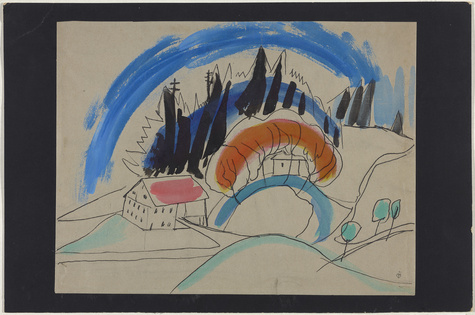
Gabriele Münter
Landschaft mit Regenbogen, 1911
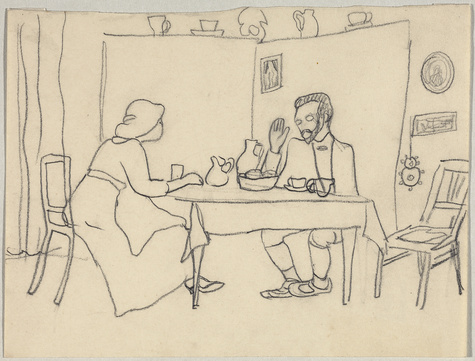
Gabriele Münter
Entwurf zu "Kandinsky und Erma Bossi am Tisch", 1910
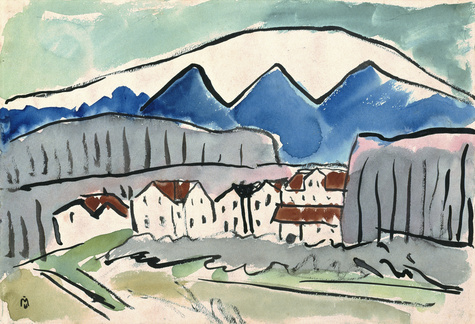
Gabriele Münter
Berglandschaft (Dorf vor Gebirge), 1911
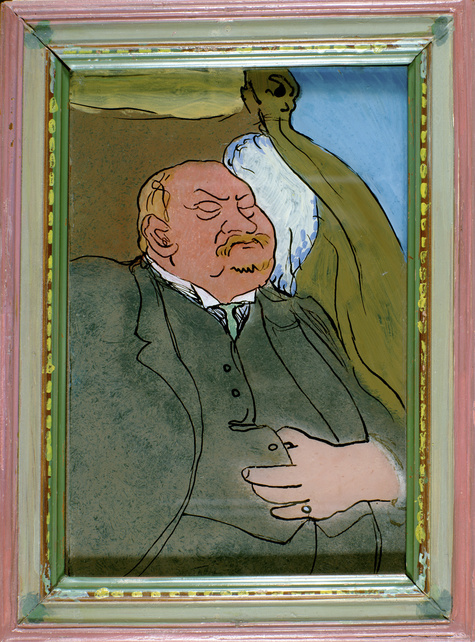
Gabriele Münter
Braumeister Schöttl vom Angerbräu Murnau, um 1910
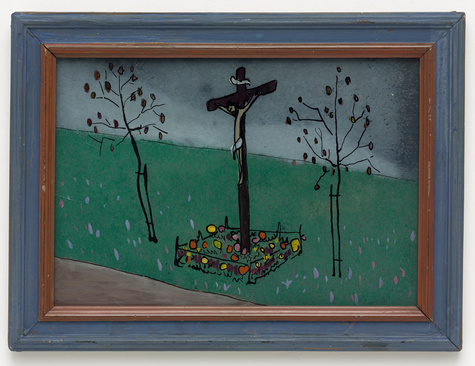
Gabriele Münter
Kruzifix in Landschaft, um 1910
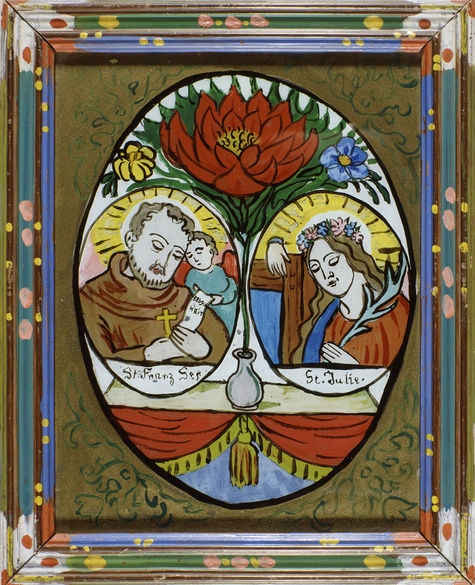
Gabriele Münter
Die Heiligen Franz Seraph und Julie, um 1910
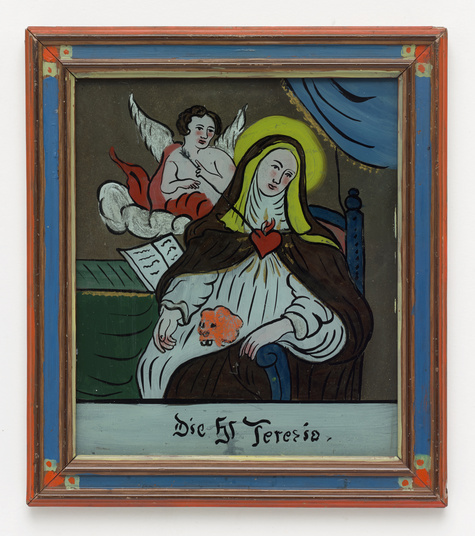
Gabriele Münter
Die Hl. Theresia, um 1908/09
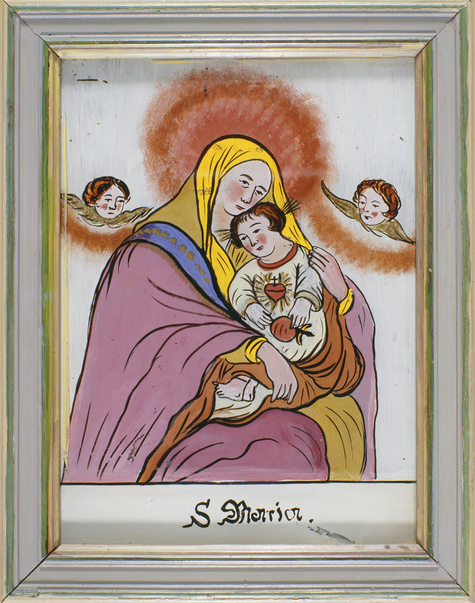
Gabriele Münter
S. Maria, um 1908/09
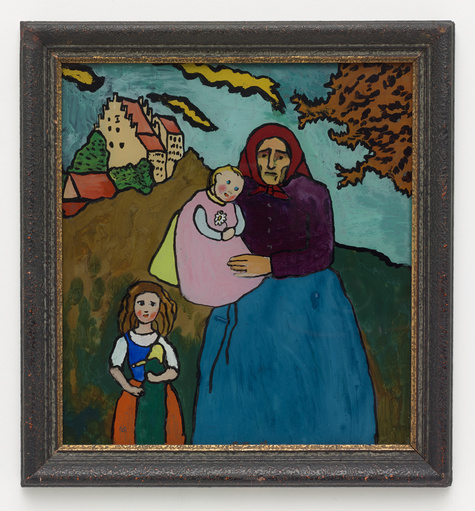
Gabriele Münter
Murnauer Bäuerin mit Kindern, um 1909/10
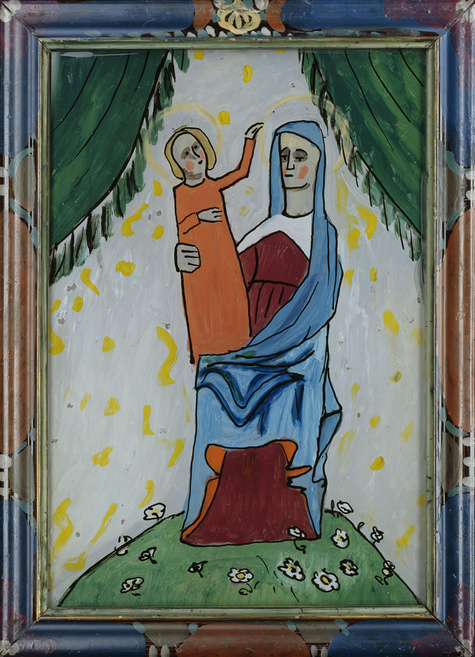
Gabriele Münter
Madonna mit Kind, um 1909/10
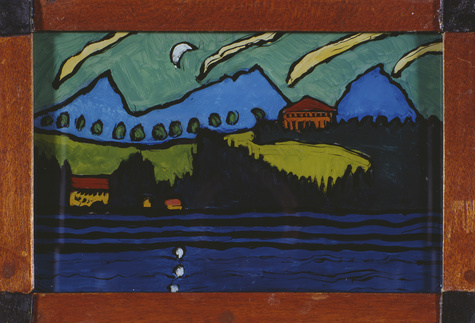
Gabriele Münter
Murnau von der Wasserseite, um 1910

Marianne von Werefkin
Wäscherinnen, um 1909
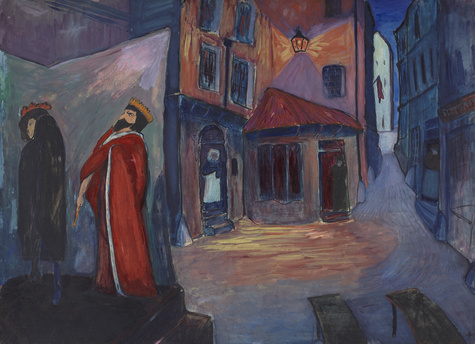
Marianne von Werefkin
In die Nacht hinein, 1910